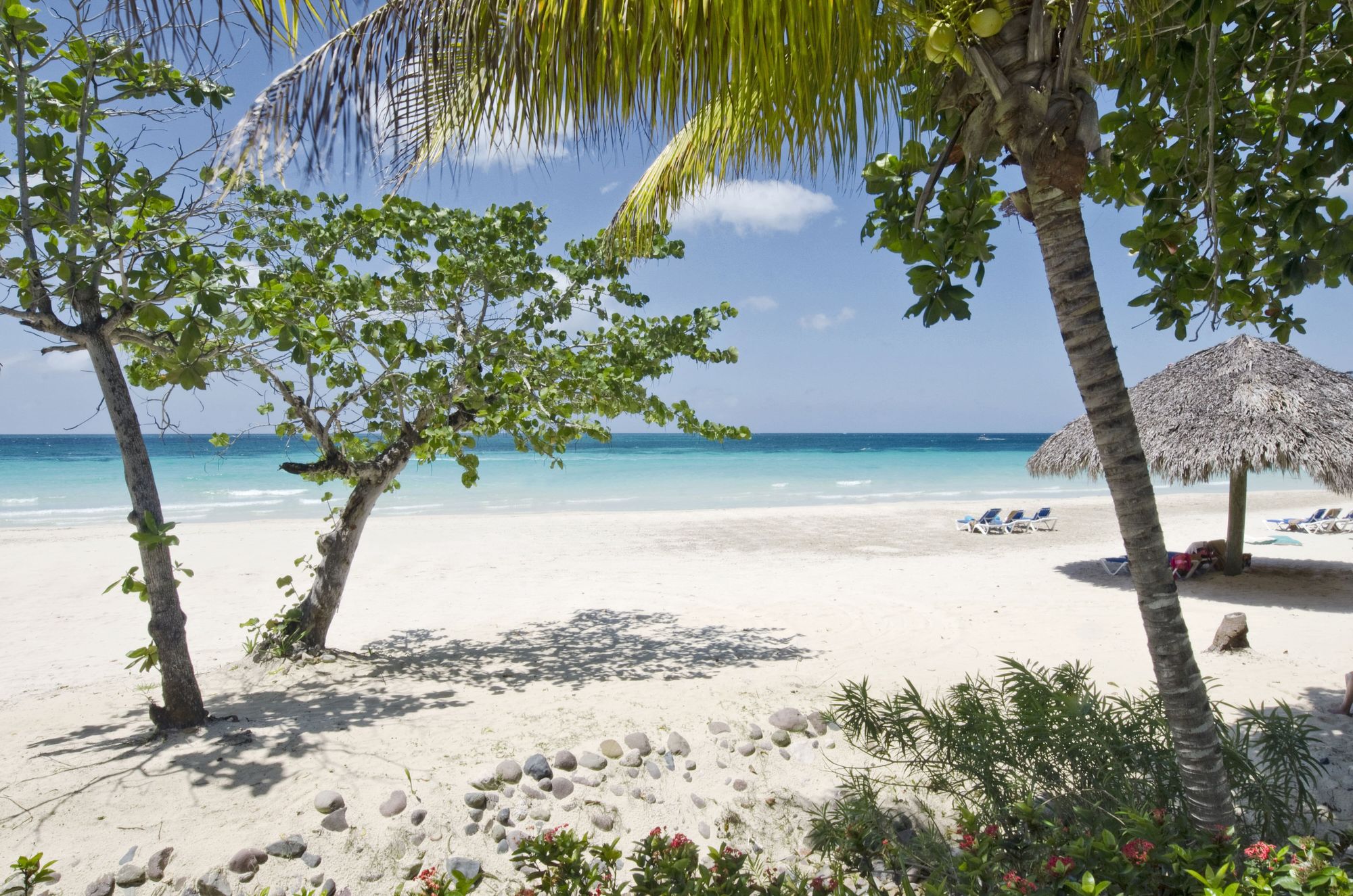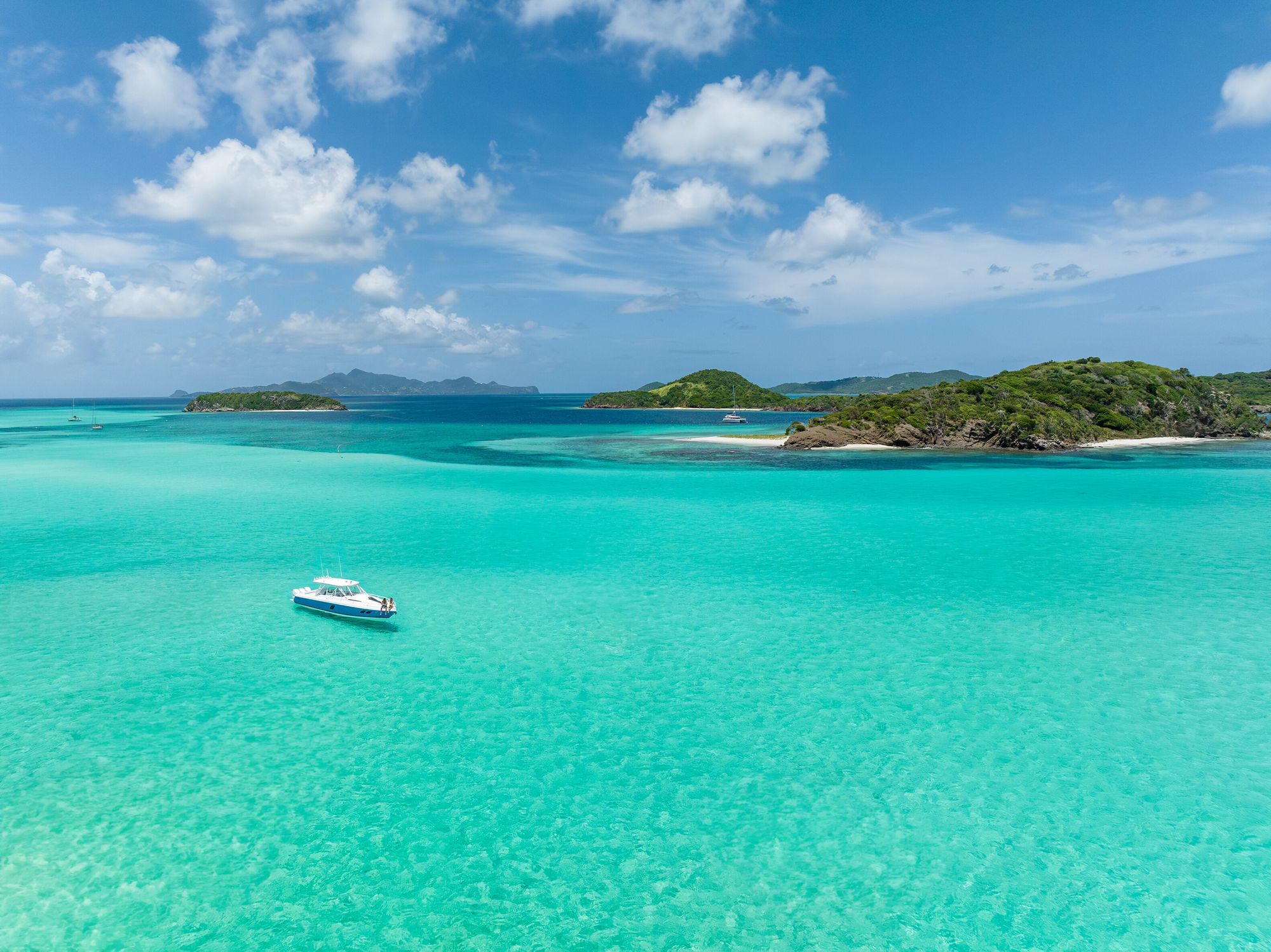Fishing in Nassau, The Bahamas: The Definitive Guide
The delightful panic that ensues following the first, “STRIKE!”. The experienced crew member hastily reaches for the rod to set the hook into the catch before handing it over to you. You know you have a good fight ahead.
It’s this inexplicable thrill that keeps fishermen returning for fishing in Nassau, Bahamas. Whether a first-timer or a seasoned angler, you’ll find there’s more to the crystal-clear Bahamian waters than just swimming and diving. Replete with sea life, the surrounding ocean makes for the perfect destination to test and perfect your angling skills.
Here’s the definitive guide to fishing in Nassau, Bahamas: what kinds of fish you might catch, the best time of year to catch your favourite fish, what to bring on board, and where to book a fishing charter.
In this article on the Sandals Blog:
Inshore vs. offshore fishing in Nassau
Inshore fishing: What fish to expect
Offshore fishing: What fish to expect
Spearfishing in Nassau
Best time to fish in Nassau (calendar)
Choosing the right charter
What to bring on the boat
Bahamas fishing event calendar 2019
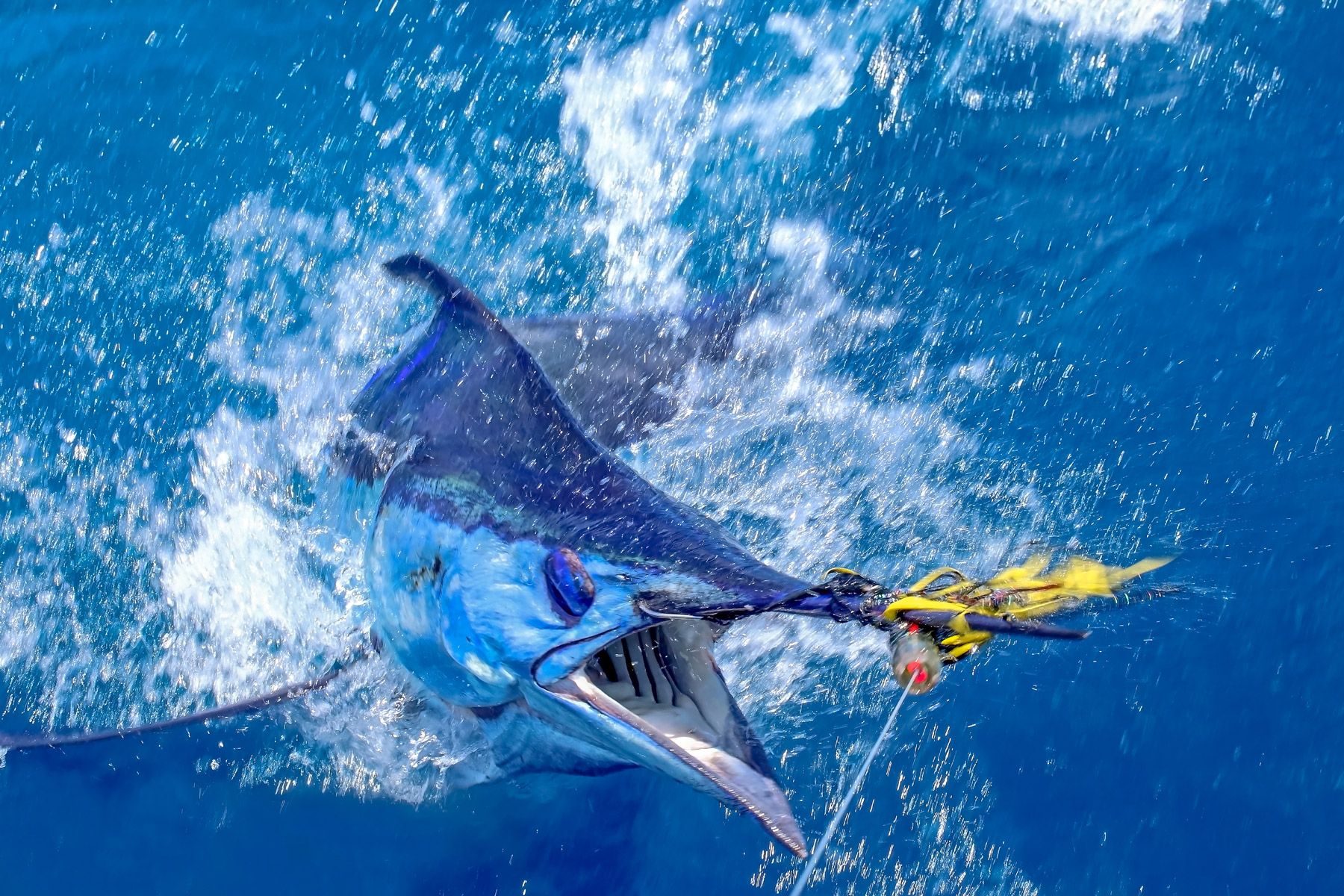
Picture: A beautiful White marlin taking the bait.
What types of fishing can I do in Nassau?
Your fishing options are plentiful off the shores of Nassau. Whether it’s bonefishing, spearfishing, deep-sea fishing or reef fishing, anglers cast their lines throughout the year here in the capital city. Whether you’re a local forging your way through the waters on your own boat, or a vacationer seeking expert advice, you’ll be sure to find the type of fishing that suits your needs.
Tip: Stay at Sandals Royal Bahamian in Nassau, and you will be able to book your own fishing adventure from the comfort and luxury of this all-inclusive resort.
Inshore and offshore fishing differences in Nassau
As the names would suggest, the main difference between the two is the depth of the water at the fishing location. Typically, inshore fishing is carried out just a few miles from the shore. Estuaries and bays are also considered attractive inshore fishing spots. Offshore fishing in Nassau is far from the shore, typically 20-30 miles out, in waters hundreds of feet deep.
Other than the depths of the waters, below are 6 main differentiators between inshore and offshore fishing:
1. Size of the boat
Inshore: Small motorboats, canoes, and kayaks.
Offshore: Large sports fishing boats.
2. Weather conditions
Inshore: Consistent fishing in Nassau year-round, even with significant seasonal changes
Offshore: Seasonality often dictates what type of fish you will catch.
3. Fuel & supplies
Inshore: Shorter distances and durations, smaller boats and fish.
Offshore: Longer distances and durations (often overnight), larger boats & fish (more ice required).
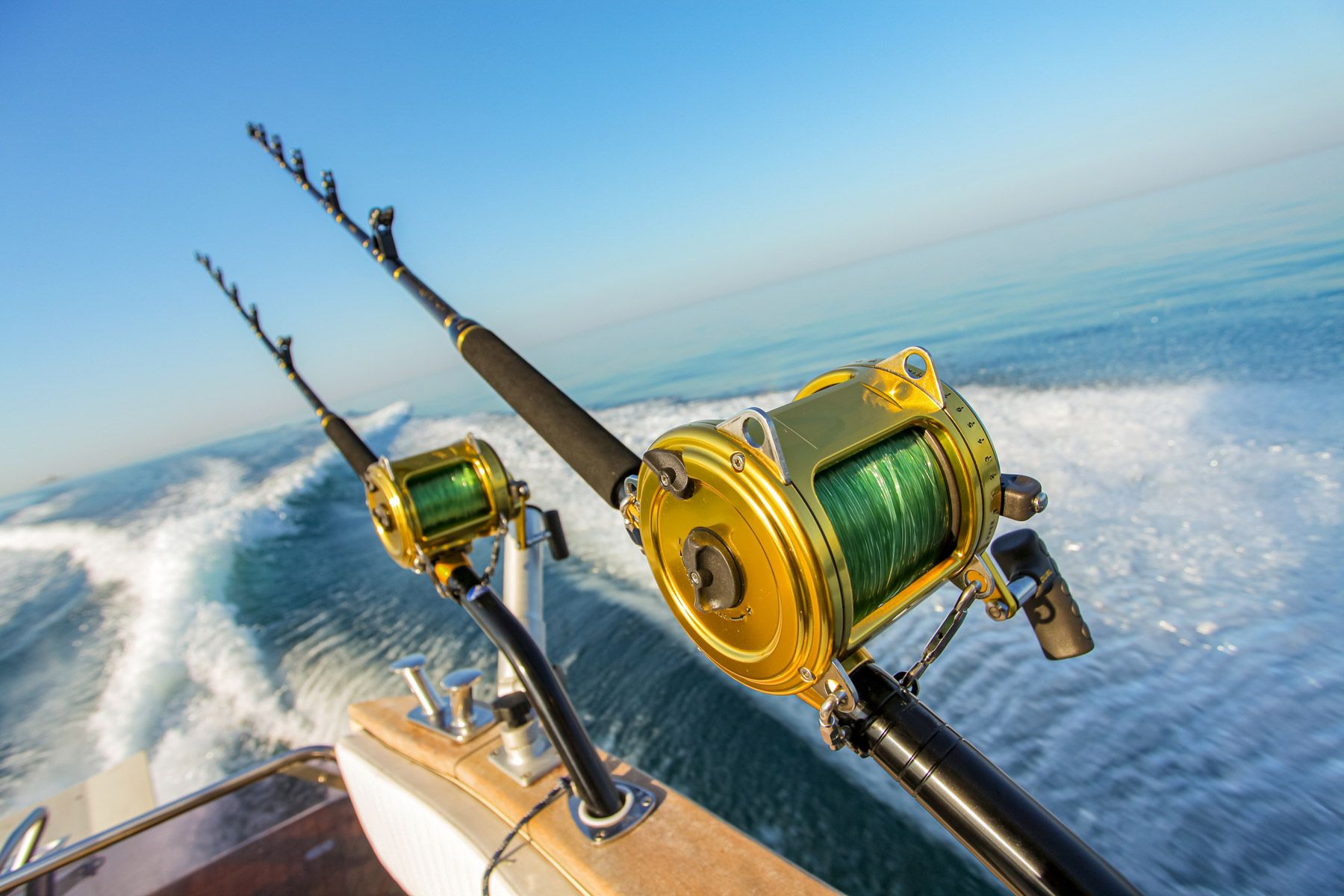
4. Tackle
Inshore: Light tackle, live and dead bait.
Offshore: Heavy-duty equipment, large heavy bait.
5. Electronic equipment
Inshore: While tracking devices are important with inshore fishing, it is minimal compared to that of offshore fishing.
Offshore: Includes 74-mile open radar (allows for travel and fishing at night), XM Satellite Radio & Weather, Chirp Sonar (technology used specifically for recreational fishing).
Picture: Father and son posing with their catch of the mahi mahi and one barracuda.
6. Variety & size of fish
Inshore: Smaller varieties such as yellowtail, kingfish, redfish (drum and sheepshead), snapper, and grouper.
Offshore: Larger fish such as amberjack, Mako sharks, blackfin, yellowfin, wahoo, marlin, cobia, dorado, king mackerel.
Inshore fishing: What fish to expect in Nassau?
Fish you can expect to catch when inshore fishing in Nassau, include bonefish, red snapper and the Nassau grouper.
Bonefishing in Nassau
If you are new to the fishing scene, you’re about to discover that when fishing in Nassau, you will experience some of the fiercest fishing in the archipelago, with Bonefish as the focus inshore. Bonefishing, simply put, is the most famous of all Bahamas fishing, attracting enthusiasts from all over the world.
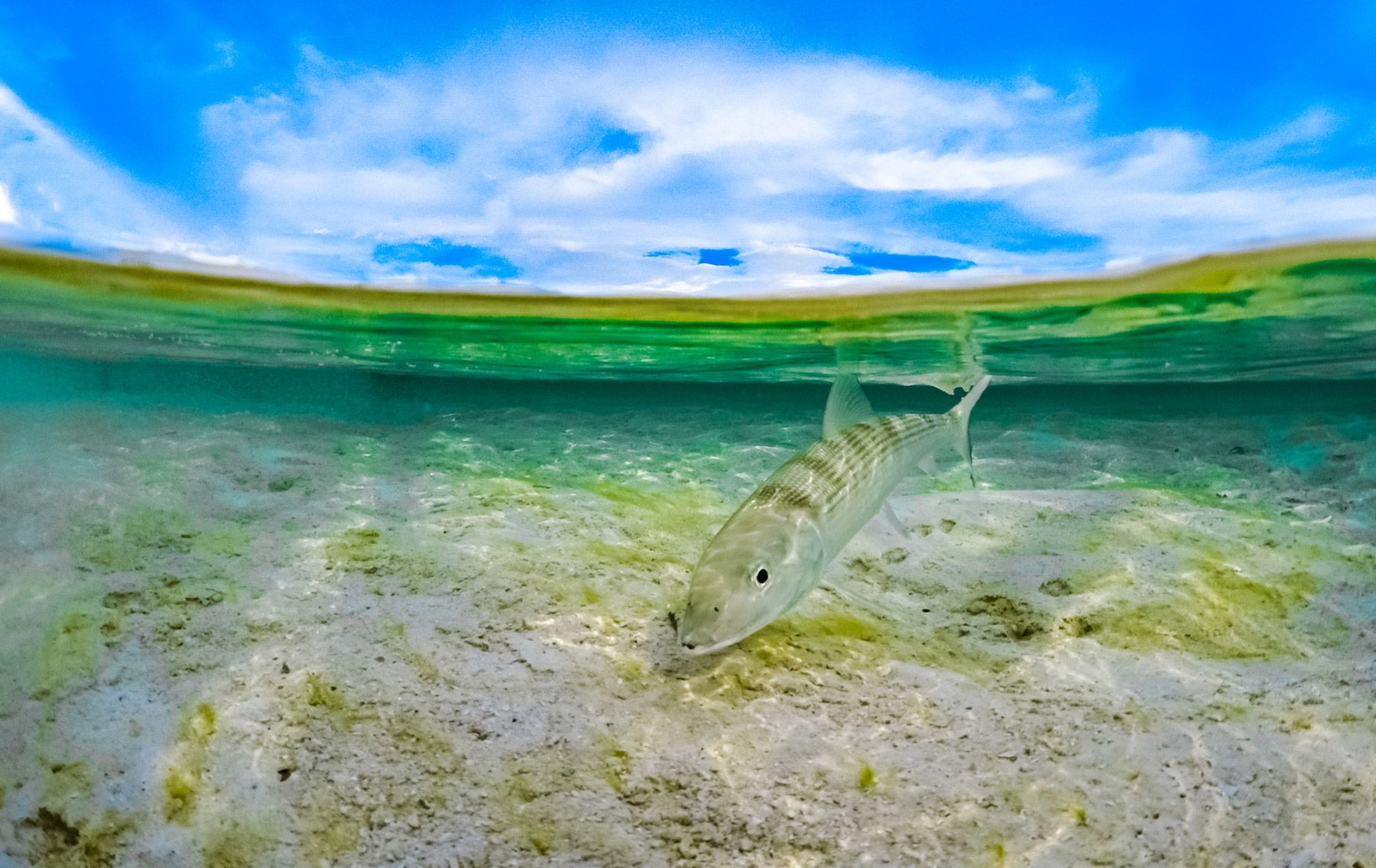
Picture: The Silver Ghost, almost invisibe to the naked eye.
Providing the perfect habitat, Bonefish are found all year round in the Bahamas, though they’re near impossible to hook. Known as the Silver Ghost, the Bonefish are almost invisible to the naked eye and flee at the slightest provocation. Hooking the bonefish is only half the job. Unwavering in their pursuit, even the most seasoned anglers will be challenged to bring one in.
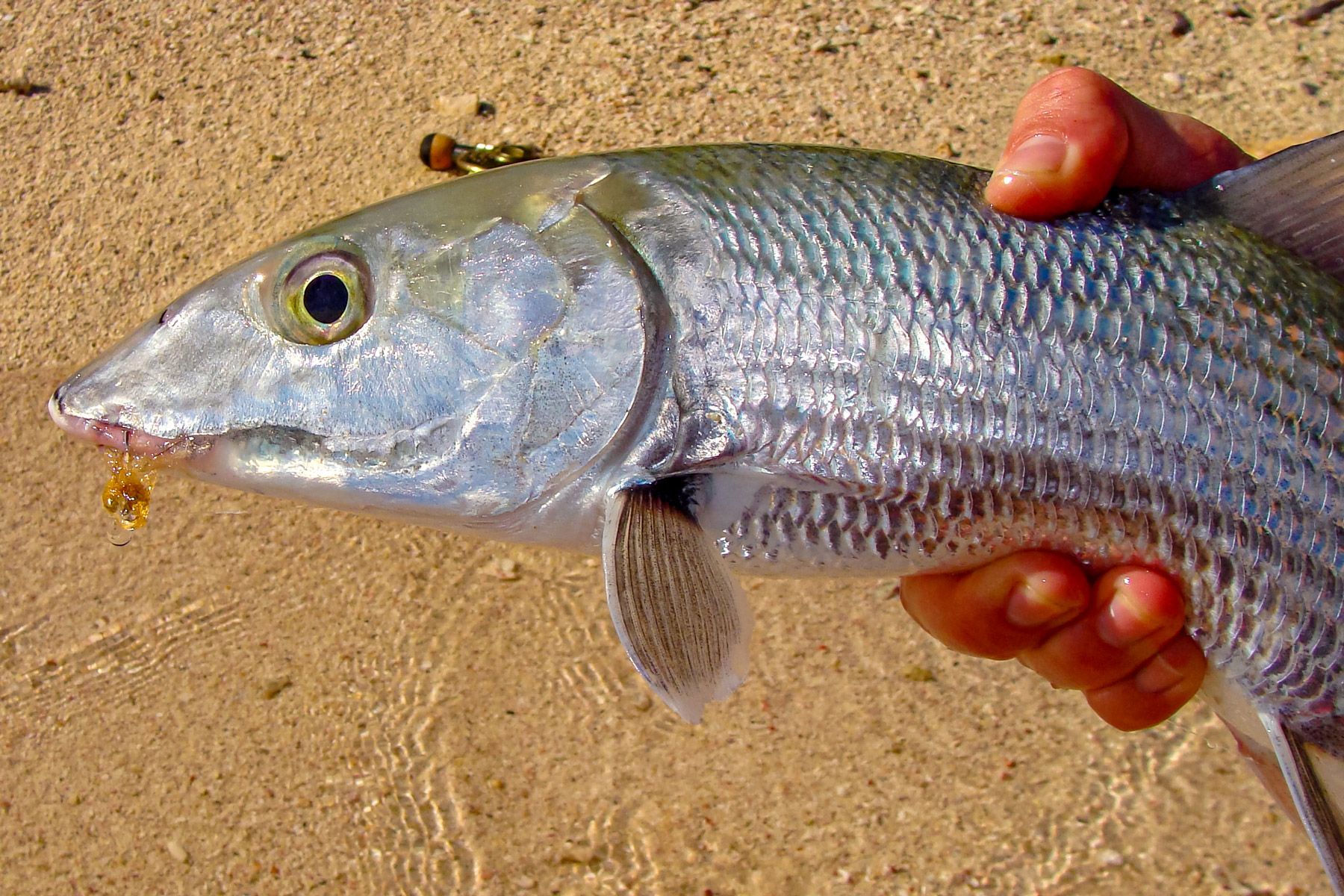
Picture: An illustration of how beautiful and silver the Bonefish is. A fact that makes it so hard to spot in the water.
The southern side of the island is by far the most celebrated for bonefishing. Commonly, inshore fishing is defined as fishing in water that is less than 90 feet which would require the use of a small vessel. During the low tide, however, you’ll find miles of wadable water making it the optimal time to cast your lines.
The summer sees an influx of permit and tarpon. Though not as easy to find, permit and tarpon make for some astounding fishing in Nassau. A good place to target tarpon is in the canals and water channels which head into the island, where the biggest silver kings like to lurk.
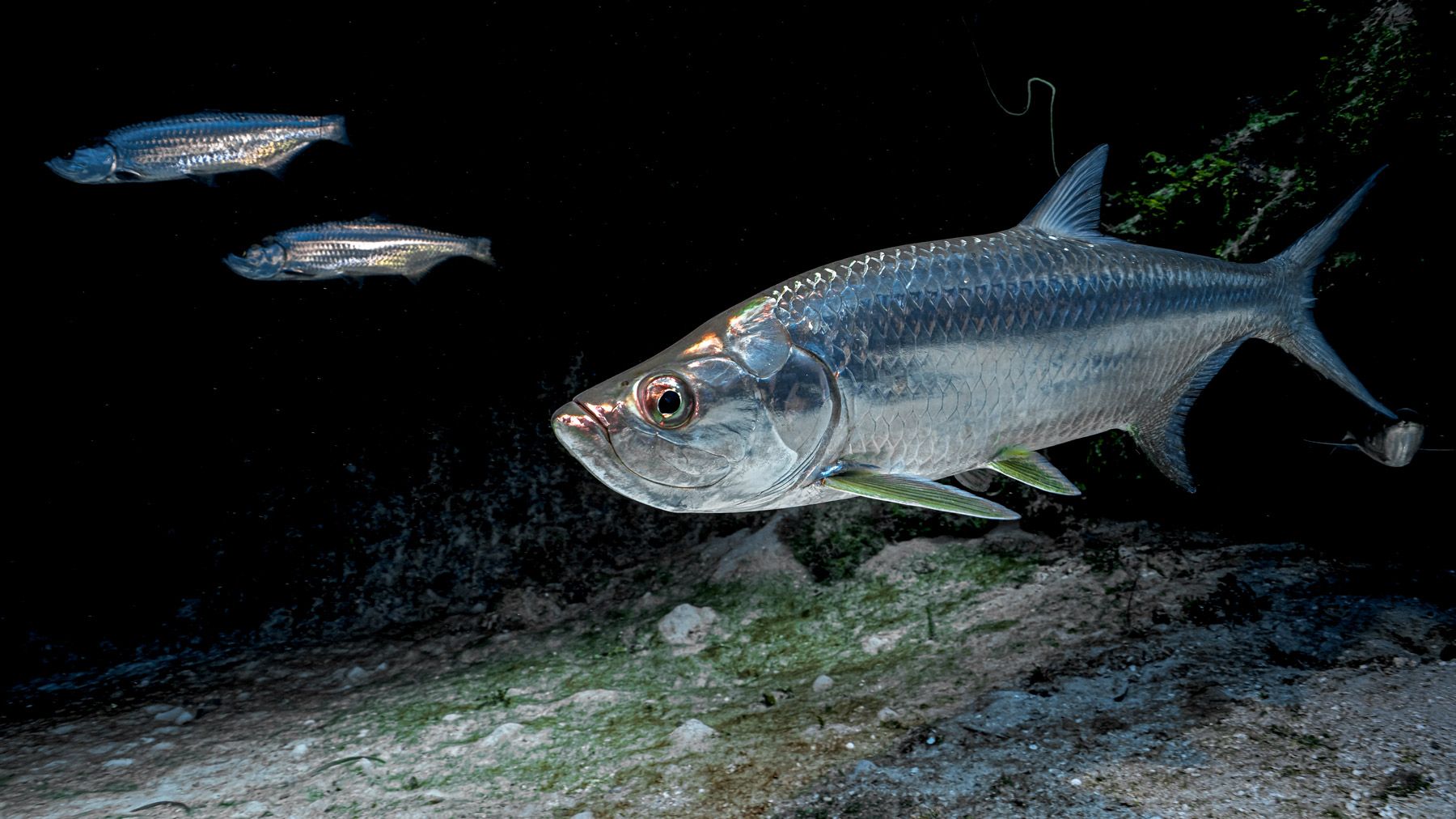
Picture: A school of large tarpon.
Reef or dry-ground fishing in Nassau
A favorite among families, reef or dry-ground fishing is far less wearing than the demands of bonefishing and easier on the pocket than deep-sea fishing. Known as hand line or bottom fishing in the Bahamas, the main requirement is to drop bait down to the seabed, where prowling fish are easily preyed upon. This is the only native form of recreational fishing. Hand line fishing grew from the simple necessity of catching fish for sustenance - all you need is fishing line, a hook, sinker and bait. With a little bit of patience, cast a line off the beach, pier, dock or boat and even the least proficient fisherman is guaranteed to catch fish in the Bahamian waters.
Expert Tip: Use squid as your bait when fishing from the shore. Many of the smaller fish swimming in the reef around the shoreline love squid, and it is both plentiful and affordable from local grocery stores in Nassau.
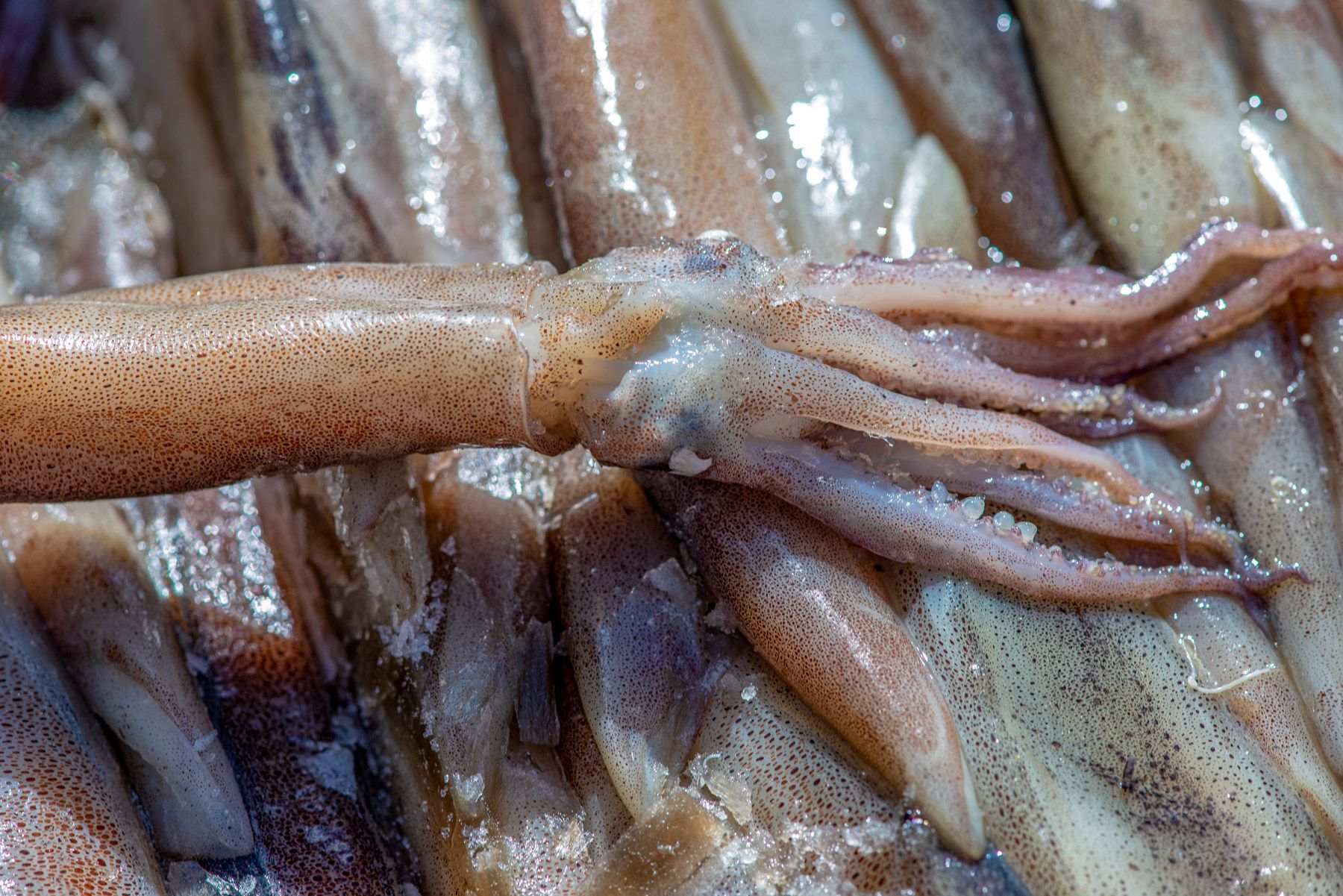
Light tackle fishing in Nassau
Light tackle fishing is a carefully thought-out approach that centers around your own ability as an angler, the species you seek, and the conditions under which you must fish. The angler uses light bait, as well as matching it up in rod, reel and line size accordingly. Don’t be fooled, there is nothing soft about this method of fishing. Some anglers swear by it and use it when the traditional fishing ways aren’t catching anything, they will switch over to this method. The idea is catching more, and bigger fish.
Though teeming with marine life, the two main fish you will encounter right from the shoreline are red snapper and grouper.
Red snapper
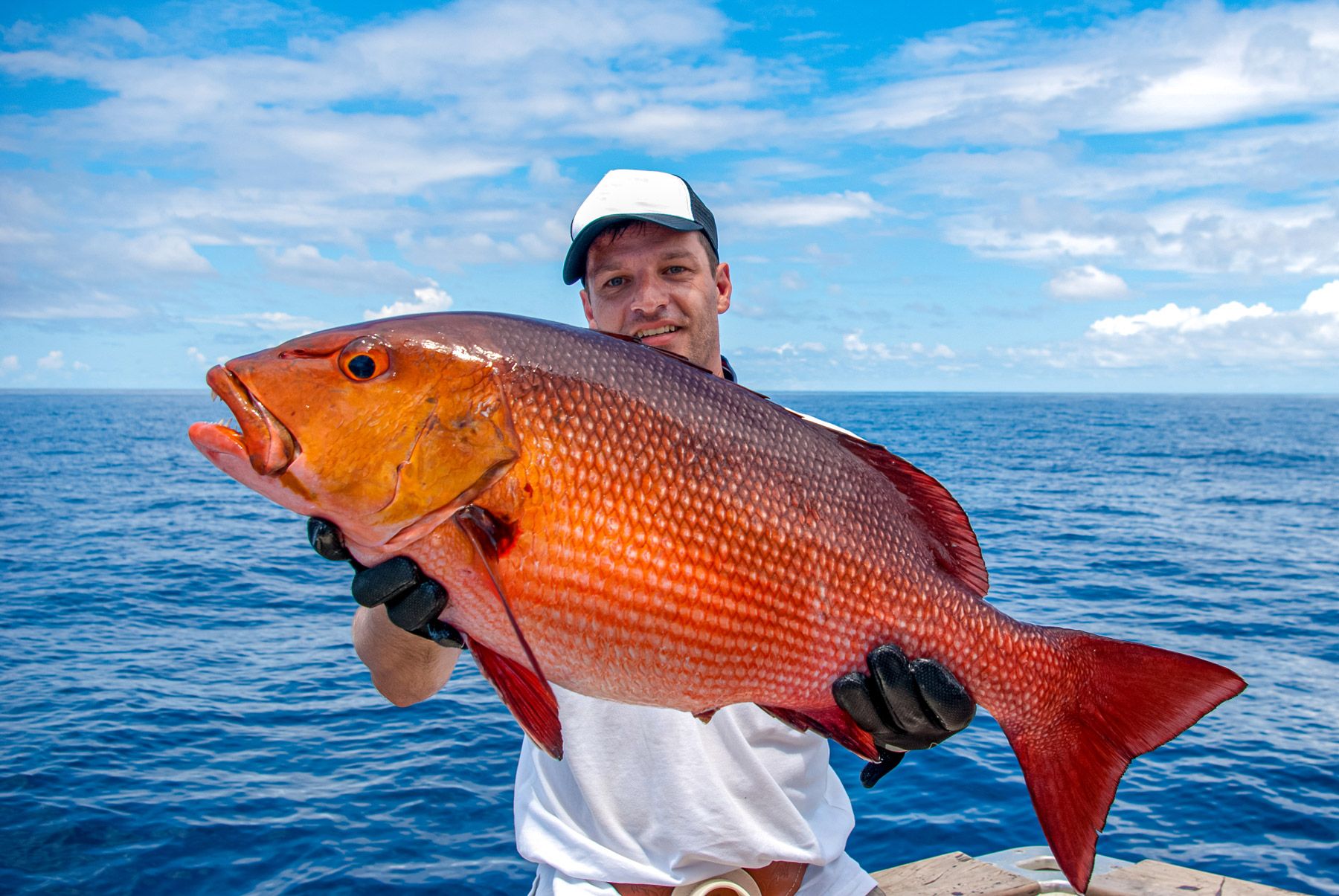
The red snapper is a bottom-feeding fish typically found around rocks, reefs, and wrecks. Red snappers are recognized by their distinctive pinkish color, white underbelly, red eyes, and their prominent snout which tends to be pointed. Generally weighing less than 10 pounds and are between one and two feet in length, they have been known to reach up to 40 inches long and weighing in at 50 pounds. The largest red snappers can live for up to 20 years.
Due to its popularity as a commercial fish, the population of the red snapper has declined. As a result, you'll be limited to catching two per day. Be sure to consult the guidelines set by the government denoting which times of the year fishing for red snapper is permitted when fishing in Nassau, Bahamas.
The Nassau grouper
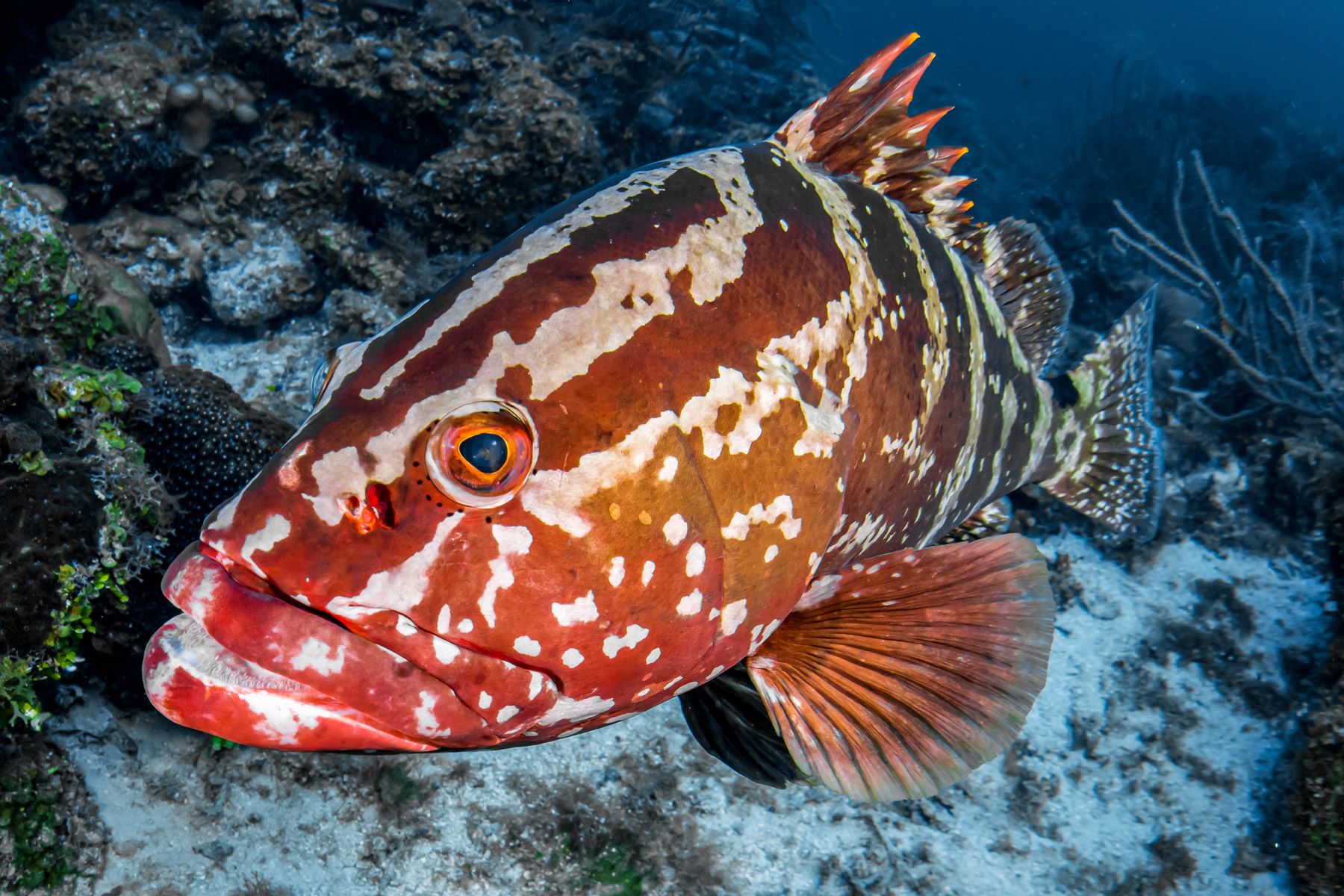
The Nassau grouper represents the most important finfish in the Caribbean and is valued as a major fishery resource. Also known as a bottom-feeding fish, the grouper seeks habitat among reefs, rocks, and ledges.
Easily tempted with live bait, the grouper makes an excellent choice for local and vacationing fishermen. It is for this very reason that fishing of grouper fish is banned during spawning season in efforts to minimize endangerment. Although adult grouper are usually solitary animals, during the full moon of November to March (winter) they migrate over long distances, grouping together in large numbers to breed. A school of breeding fish is called a spawning aggregation. Historically aggregations had tens of thousands of fish, but today these numbers have dwindled significantly.
Interesting fact: All groupers are born female, and some will change to male when they reach breeding age.
There are many types of Bahamian grouper, but the Nassau grouper is easily distinguished. It is recognized by its diagonal markings through the eyes, five olive brown vertical markings (bars) on a light body, Y-shaped marking on the front of the face between the eyes, and the dark saddle-shaped marking on the base of the tail.
When fishing in Nassau, Bahamas you will find groupers that are generally between 1 and 10 pounds maxing out at 50 pounds.
Offshore fishing: What fish to expect in Nassau?
Clear sunny skies, ocean breezes, and turquoise waters: the postcard-perfect destination begets outstanding conditions for game fishing. Home to many species, the warm waters of Nassau house predators such as marlin, tuna, sailfish, barracuda, mahi mahi, wahoo and sharks to name a few.
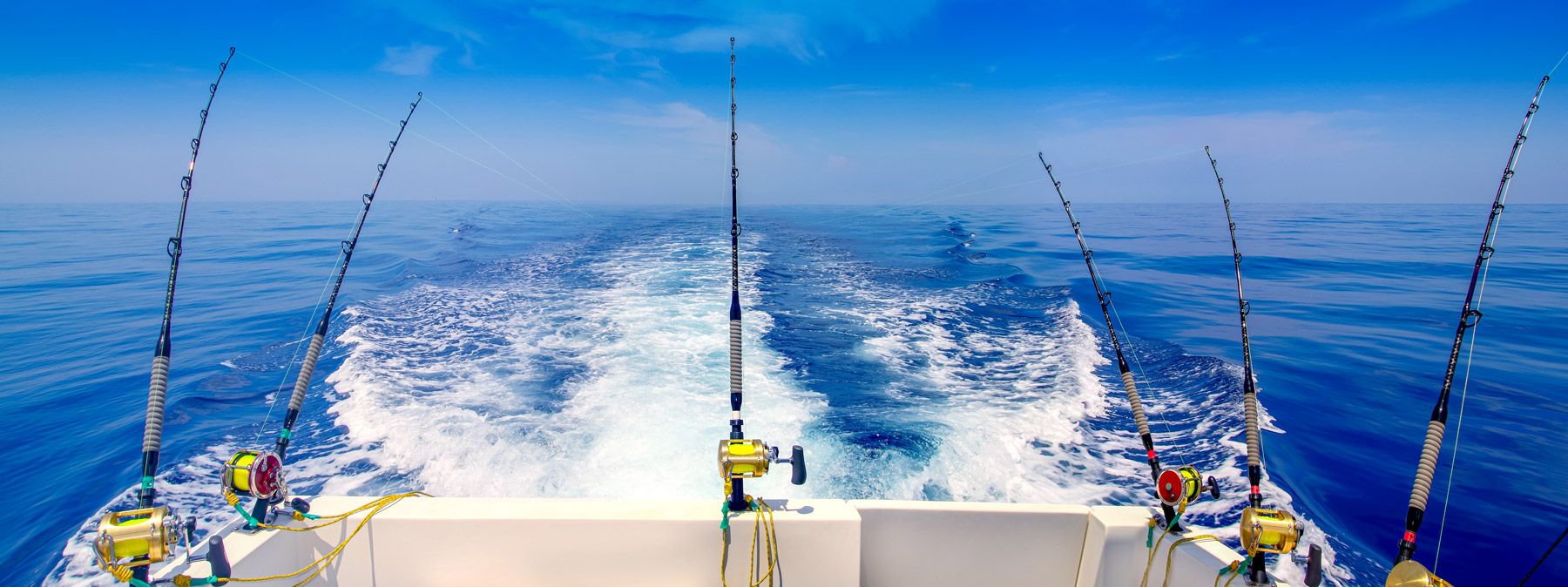
Short trips or long excursions, deep-sea fanatics eagerly attempt to beat over 50 world records set here. A day out at sea on a fishing charter off the shores of Nassau is a day of frenzied fun and promises to contend as one of your best fishing trips you will ever have. Below is a detailed breakdown of the different types of game fishing you can do which should set you on your way.
Barracuda
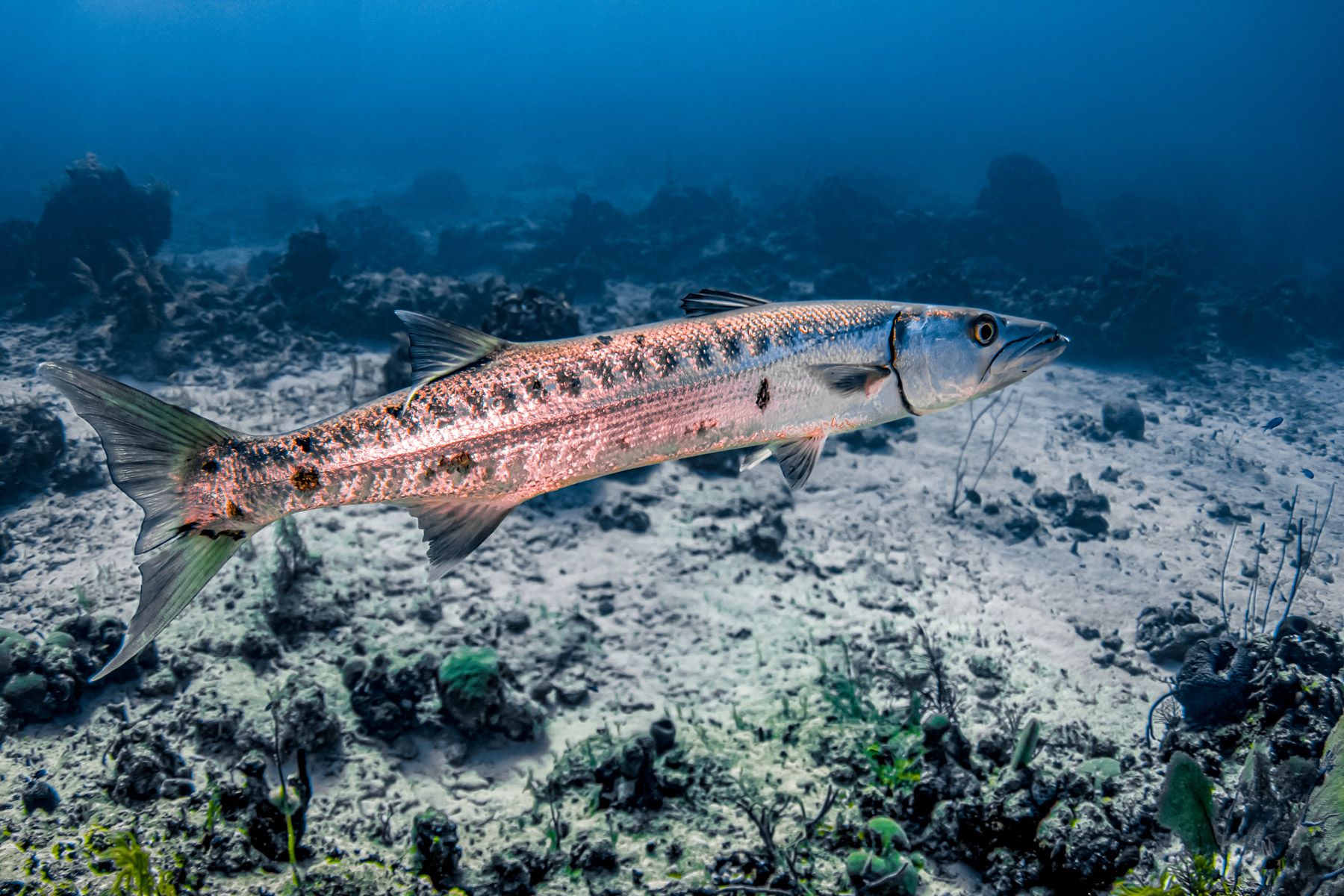
Until you have successfully hooked your first barracuda, you have not yet experienced deep-sea fishing.
Found offshore and inshore, the barracuda can grow up to six feet in length and a foot wide, with a row of razor-sharp teeth that can intimidate even the most seasoned fisherman.
Known as the tiger of the sea, the barracuda prowls the ocean preying on smaller fish including jacks, grunts, groupers, snappers, small tunas, mullets, killifishes, herrings, and anchovies. Though, they are not impartial to bigger prey.
Stealth, surprise and short bursts of speed is what separates this predator from its prey. Always hungry, the barracuda tears through the waters at an average pace of 27 mph which means that there are few fish in the ocean that strike your line with the ferocious force of a feeding barracuda.
Distinguished mostly by its silvery sides and chalky-white belly, this game fish varies in color from dark blue to dark green or even gray on its upper body. In our Bahamian waters, the species typically have a row of darker crossbars on each side.
White and blue Marlins
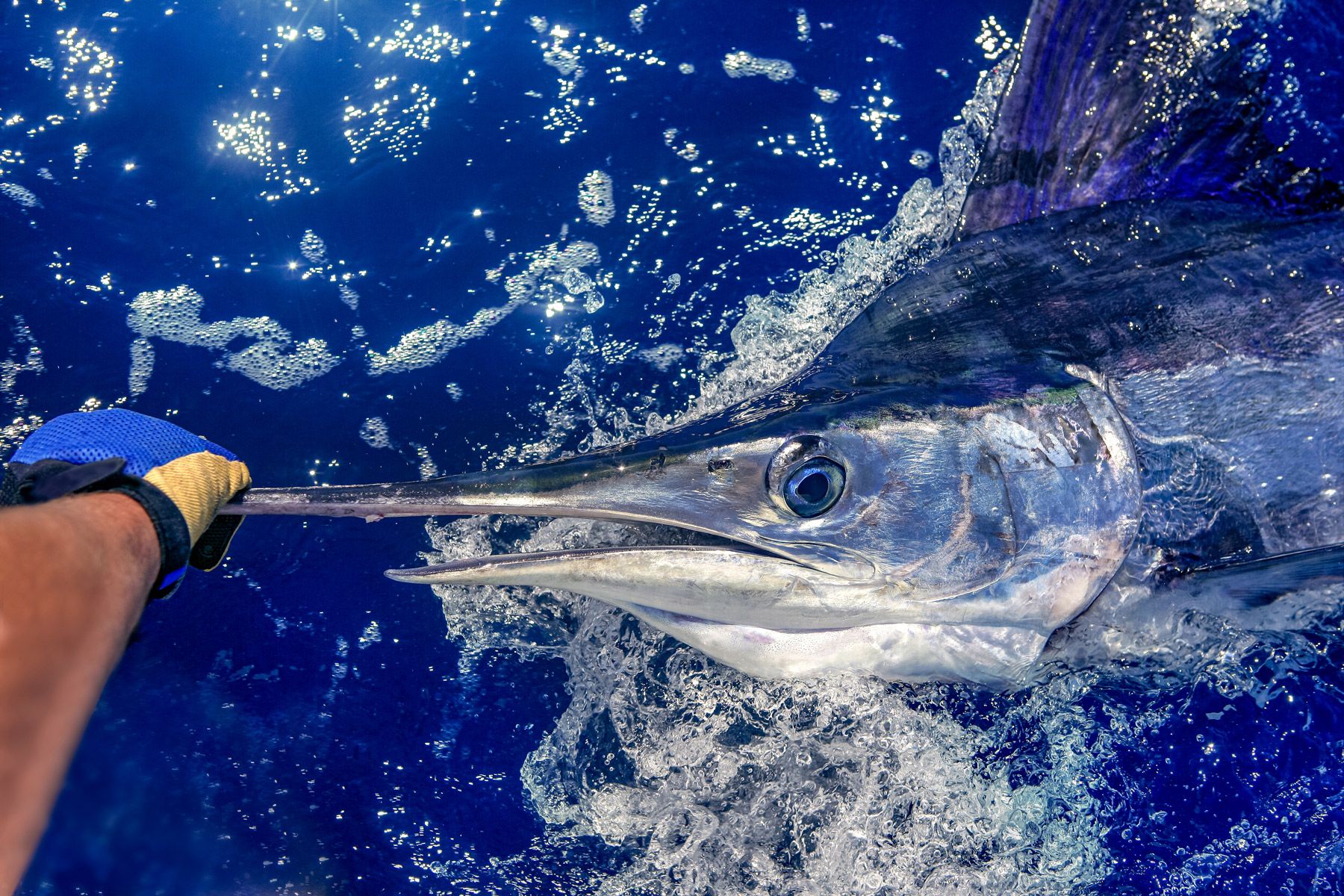
Picture: A White marlin.
Marlins, white or blue, are bountiful across the shimmering blue waters of the Atlantic Ocean. As the largest and most powerful fish of the Bahamas, the silvery blue marlin represents the national fish and can be found on the Bahamas coat of arms. Marlins are known for their size with the females growing up to four times as large as the males. While the larger males usually weigh about 350 pounds, a female can reach up to 1,800 pounds.
White marlin and blue marlin fishing have many similarities, particularly in the dramatic show that the fish puts on when caught. Though one of the most popular fish in the Bahamas, catching one, may prove difficult due to their strength and size, but is extremely rewarding. Both the blue and white marlin are spectacular jumpers and persevering fighters. The marlin effortlessly launches itself out of the water displaying its strength as you stand your ground in your vessel. The blue marlin, however, wins the prize for being stronger and more powerful.
Differentiating itself from the white marlin, blue marlin is larger in size but the most recognizable characteristics are its high dorsal fin and it’s long pointed bill. The fish is usually blueish-black to cobalt blue on top with a silverish-white underside.
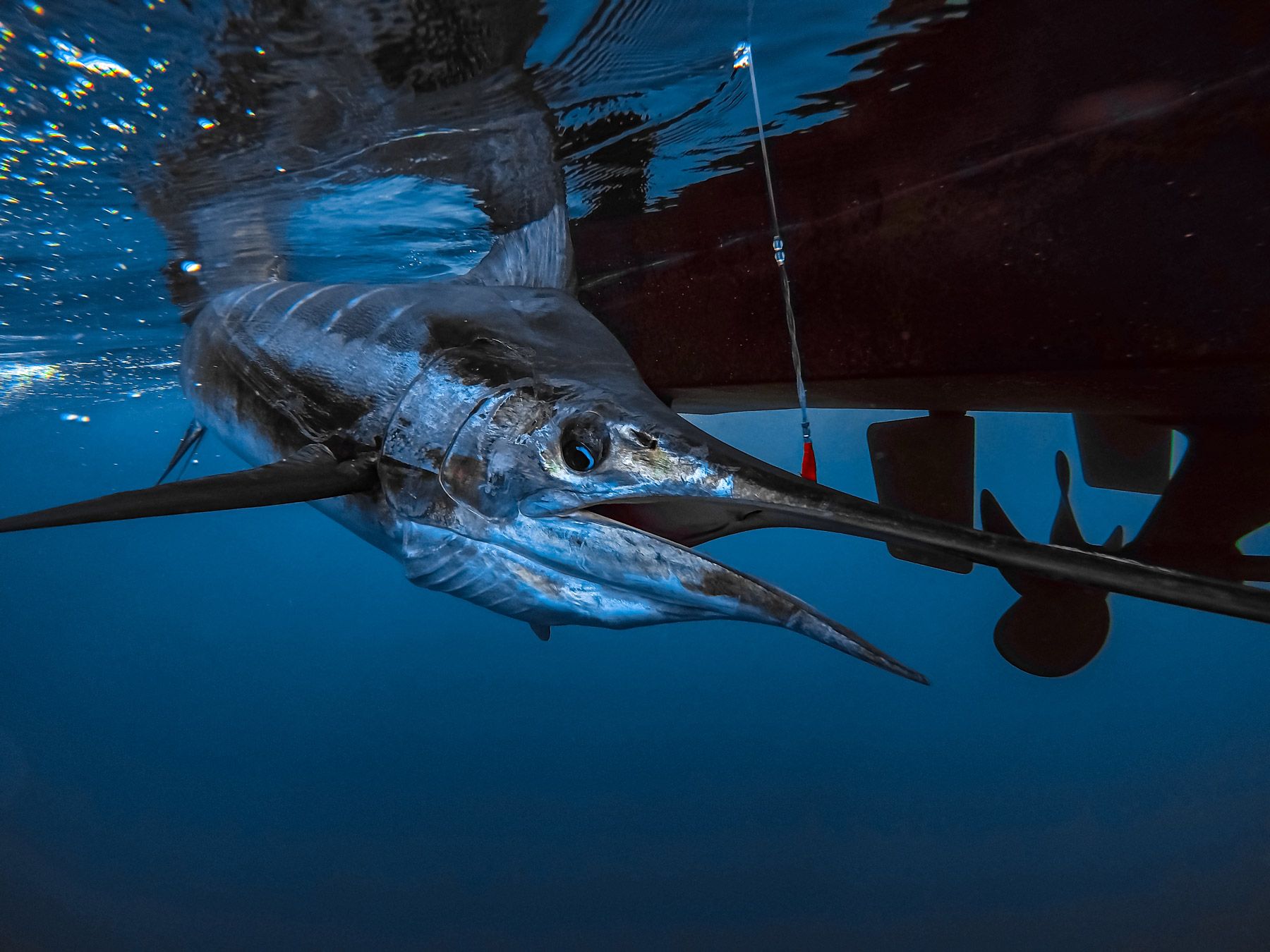
Picture: A Blue marlin.
The rounded dorsal, pectoral, and anal fins are the notable differentiating characteristics of the white marlin. While swimming they commonly display a technique known as “tailing,” in which only the dorsal lobe of the caudal fin is visible above the surface of the water.
Natural bait and artificial bait can all be used when catching marlins. Dating as far back as the 1930s natural rigged bait like Spanish mackerel and horse ballyhoo have been used and are still popular today. To catch the crown jewel of the Bahamas, the splashing action and bubble trail of an artificial lure is usually a more popular option. The artificial lure should be between 7 and 14 inches and fished at a speed of 7.5 to 9 knots. It can be fished from an outrigger or rod tip.
With a preference for warmer waters and warmer temperatures, the marlins generally stay in the tropical areas of the Atlantic Ocean, particularly in the waters of the Caribbean and Central and South America, as well as the coast of Africa near the equator.
Sailfish
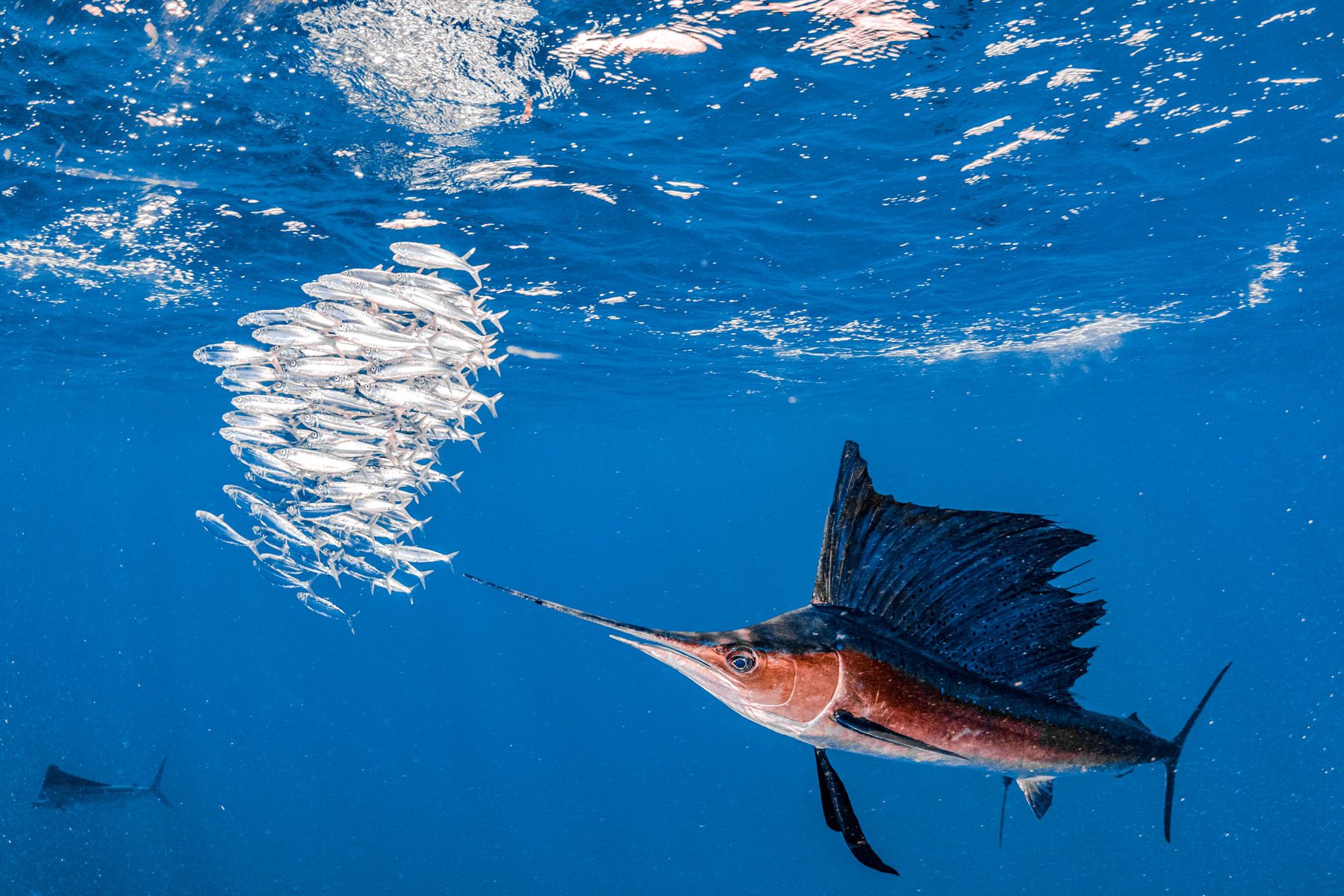
Noted for its incredible fight, the Sailfish is widely known as the world-class fighter. Dubbed one of the fastest fishes in the ocean, ploughing through 100 meters of water in under five seconds, Sailfish angling is some of the most rewarding big game fishing out there.
Like its cousin the marlin and swordfish, it has an elongated bill, and is commonly known as a billfish. These ocean warriors can grow up to eight and nine feet in length and top out at two hundred pounds. This beautiful sailfish gets its name from its large dorsal fin which resembles a sail, and which often stretches the entire length of its back.
Not only does the sailfish offer a world-class fight, but once hooked their sensitive skin changes colors in response to their nervous systems. You will see an incredible range of colors, from browns and grays to shimmering purples, blues, and silver, as this amazing fish dances through the sea and across the waves.
Hoping for an Ernest-Hemingway-style portrait? Sailfish are found around Nassau, in late fall—October and November - and in the spring, April and May.
Mahi Mahi
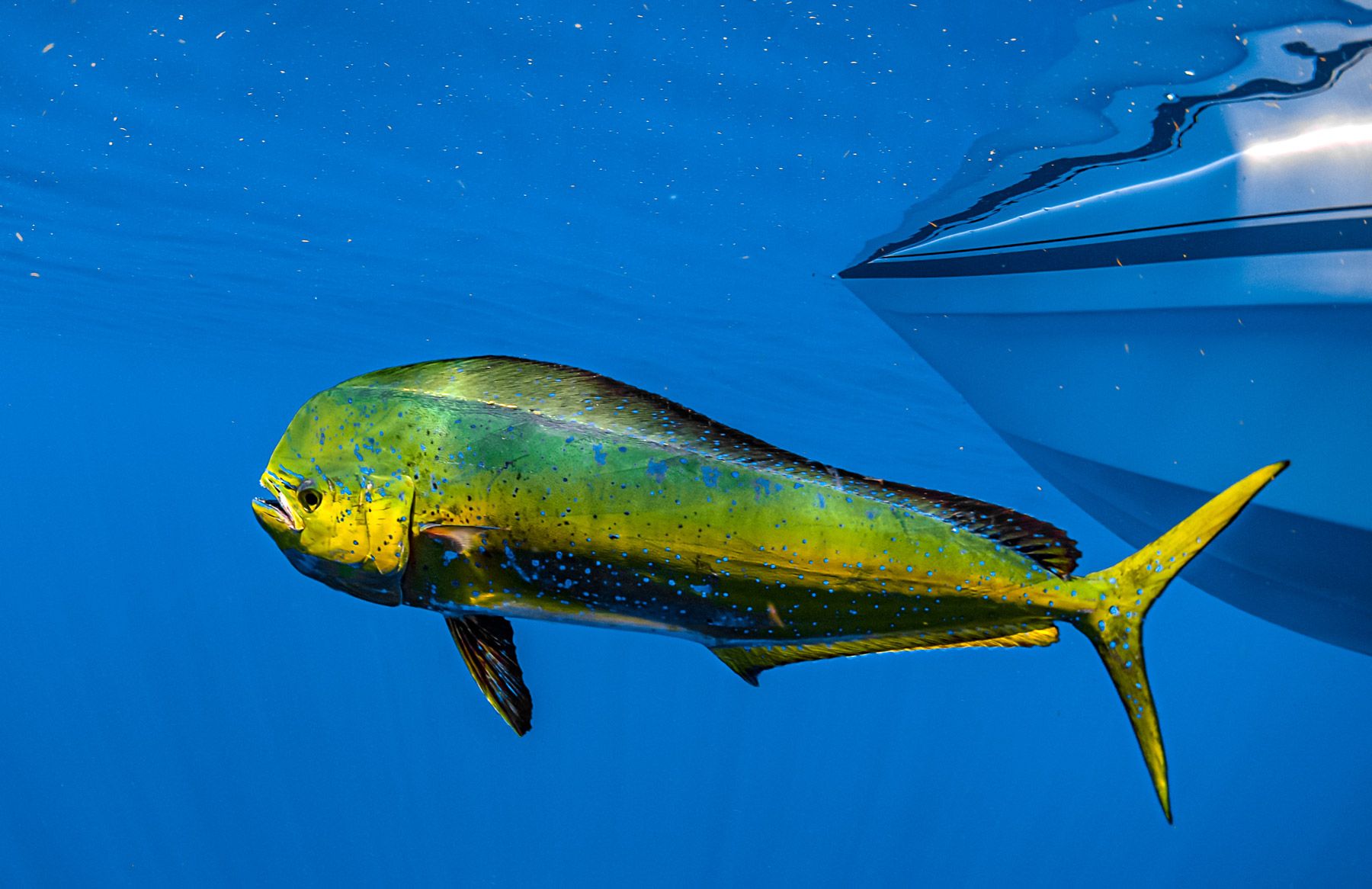
As easy as a Sunday, Bahamas mahi mahi fishing makes for a lovely day out at sea. Commonly known as dorado or dolphinfish, mahi mahi catches the eye as it shimmers in colors of gold, green, blue, and even red coloring on a sleek body of pure fighting muscle.
The name mahi mahi is Hawaiin for strong. As the name would suggest, the mahi mahi puts up a hard fight. A telling sign that you may be in the presence of a school mahi mahi are the frigate birds swooping into the water diving for food. The fierce predators are drawn to floating wood, fronds, or seaweed where the smaller fish congregate for a feed.
The male, or bull is characterized from its distinctive blunt head or the cow with the more rounded head, either way, mahi mahi typically weigh in between 15 and 30 pounds. Though not the biggest of the game fish, once on your line, mahi-mahi are incredibly fast. When you reel one in with the help of your captain and crew, you'll enjoy its vibrant colors that soon fade once caught. Able to respawn very quickly when in season, mahi mahi are very tasty with a mild flavor.
Wahoo
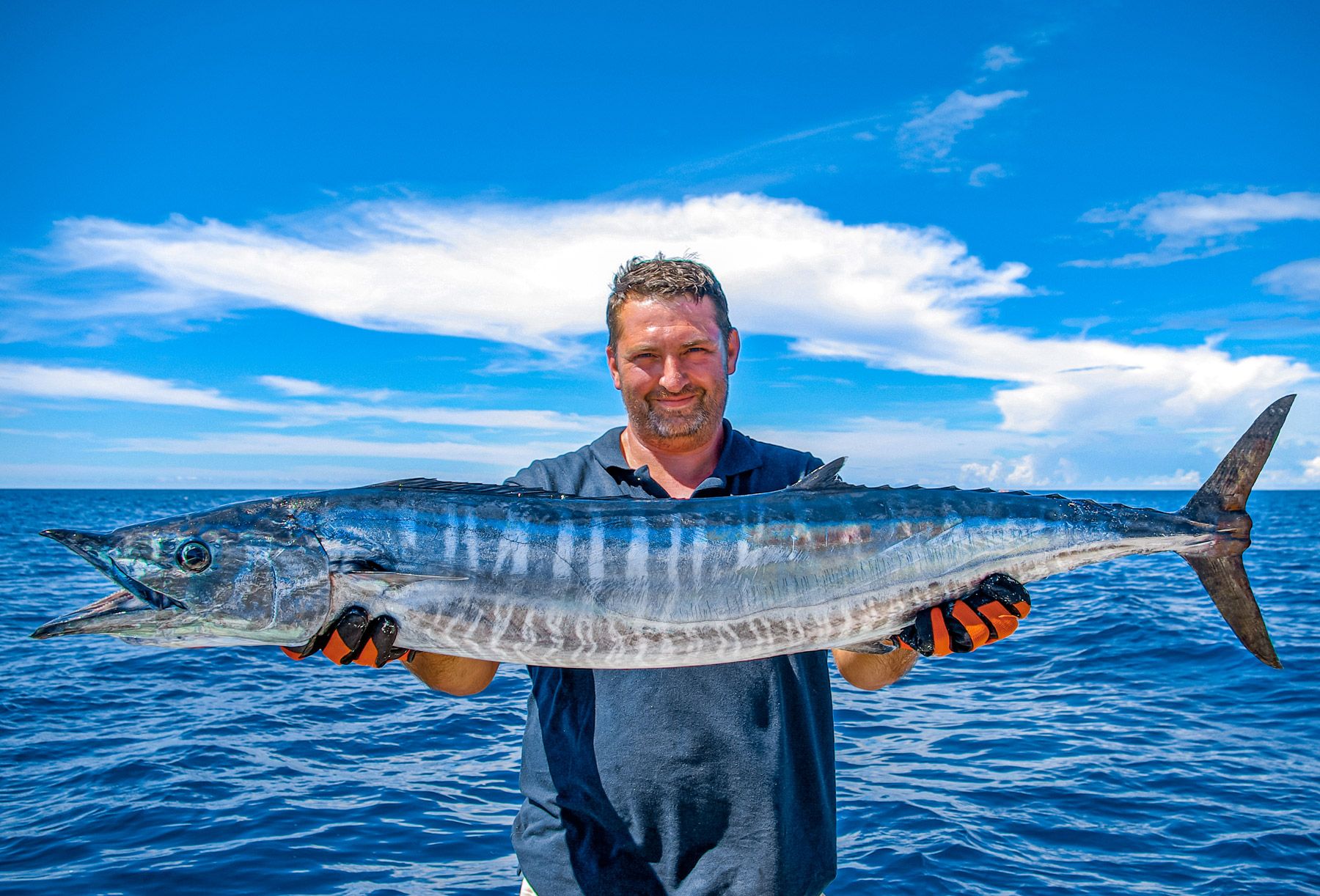
The exalted feeling you get as you shout “WAHOO”, doesn’t even touch the feeling you get when you catch this fish. This game fish is known for its long hard runs at speeds of up to 45 mph. The boat may troll up to 10 knots for this catch. Recognized for its beautiful blue vertical stripes, this species can grow up to eight feet long and weigh over 100 pounds.
While not the easiest fish to catch, Bahamian experts recommend an early morning rise as success is more likely at daybreak. Turning off the engine and allowing the fish to come to you may also help. While feeding in groups, these fish are also prone to travelling with other groups of fish, leaving fishermen pleasantly surprised when they reel in their nets and find that they have caught one.
The Hawaiian word for this fish is “Ono” which means “tasty.” If you do catch the fish don’t miss the opportunity to get your buddies together to give them a taste of your catch of the day. It’s a delicacy not to be missed.
Blackfin tuna
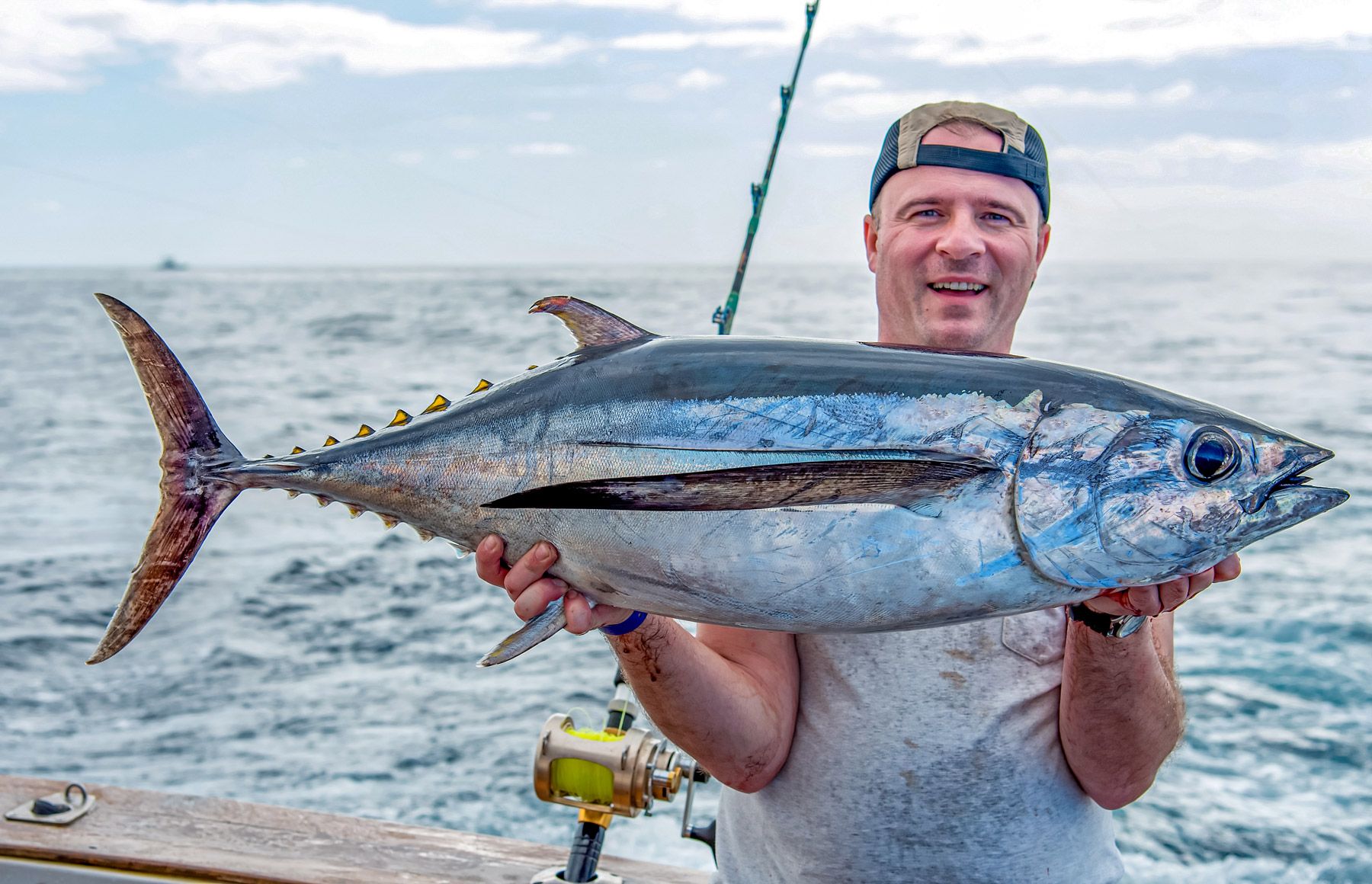
A Bahamian summertime favorite! During the months of June and July, large blackfin are in abundance making them easier to find in open water. Though not the biggest of its species, the average adult measures approximately 40 inches in length and weighs in at about 45-50 pounds.
The Blackfin can be characterized by its distinctive dark back and white body. They usually have yellow-tipped fins and narrow light-yellow bands above their side fins. Blackfins live an average of five years and breed at roughly two years old. Their spawning season is during the summers, therefore among the best times of the year for a delicious red-fleshed steak.
In the Bahamas, Blackfins hunt and feed mainly in the mornings as well as early afternoons. All fishing parties are to abide by local Bahamian fishing laws. Keep in mind that in The Bahamas, only six tuna species per boat can be caught and kept – any extra fish must be caught and released for conservation purposes.
Bluefin tuna
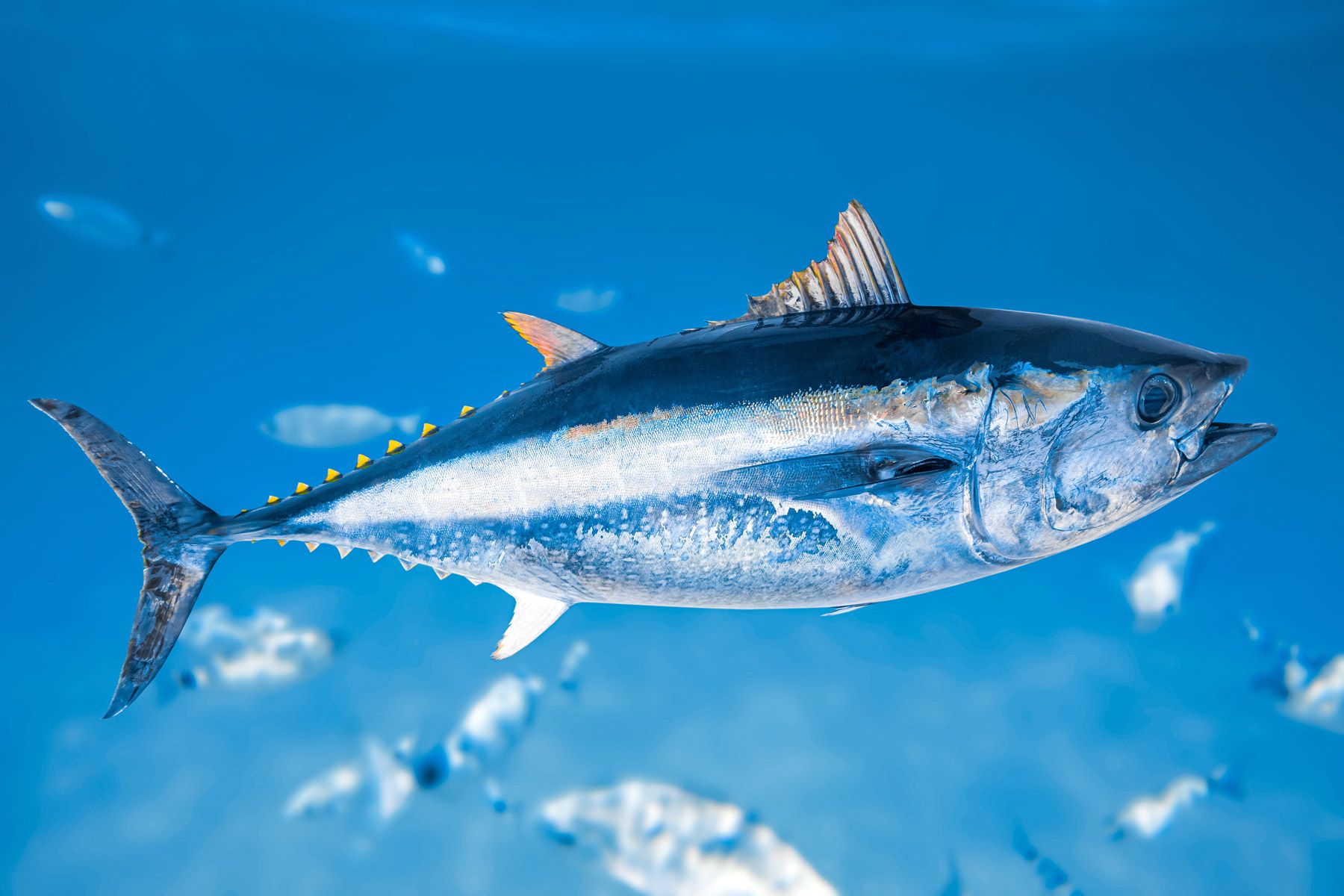
Sports fishing enthusiasts head to the Bahamas throughout the year in the hope to catch what is recognized as one of the most prized of trophies, the Bluefin tuna. It’s size, strength and rarity are what give it its appeal. Its rarity is due to the Bluefin being over-fished commercially for decades making a catch that much more difficult, but that much sweeter.
The largest of all tuna species, Bluefin tuna can weigh more than 500 pounds and stretch more than six feet in length. As large as they are, this has no bearing on the fish’s natural speed. They have been known to swim more than 40mph. Also contributing to the Bluefin’s elusiveness.
These large predators are the only warm-blooded fish of its species. This means they need to consume large quantities of food if they are to survive the cold ocean waters. Swimming for miles, and sometimes crossing the ocean multiple times increases their nutritional requirements. Anglers can use this to their advantage. Tempting the Bluefin with the right bait is the key to a successful catch.
The Bluefins are celebrated for their tender and flavorful meat. If you haven’t caught one before, you’ll recognize it as sushi, the Japanese delicacy. A single 500-pound fish can be sold for hundreds of thousands of dollars.
Yellowfin tuna
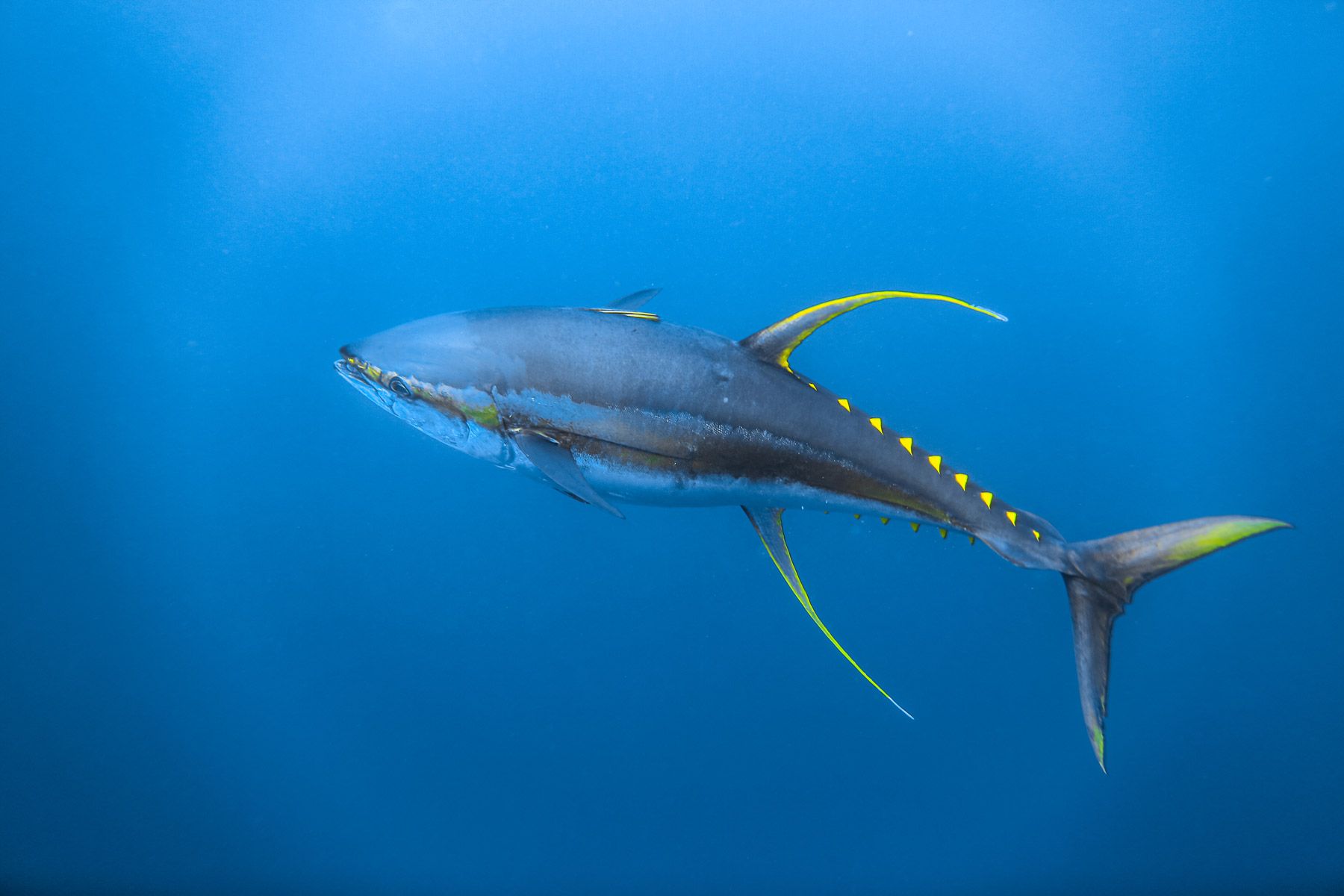
The yellowfin tuna is the most common of the tuna species found in the Bahamas. While not the largest of the tuna family, they certainly put up a fight that rivals any fish in the ocean. While yellowfin tuna can be caught worldwide, you’ll be hard-pressed to find a better place than the Bahamas.
A great tip to locating tuna is to look out for the birds. If you see birds diving into the water to find food, you know you’ve hit gold. The reason for this is because the tuna push baitfish up to the surface of the water thus inviting the birds to swoop down to feed.
Yellowfin tuna of the Bahamas can range between 10 to over 400 pounds. A long pectoral fin doubled with a tail larger than its body, make for a very strong and fast fish. The bigger the fish the more rewarding the challenge.
Difference between bluefin and yellowfin tuna
While bluefin tuna tend to be bigger than yellowfin tuna, it can be difficult to distinguish between smaller bluefin and yellowfin tuna, especially since their coloring changes slightly after a long fight. Below are a few guidelines to help you quickly identify the difference:
Bluefin tuna: How to recognize?
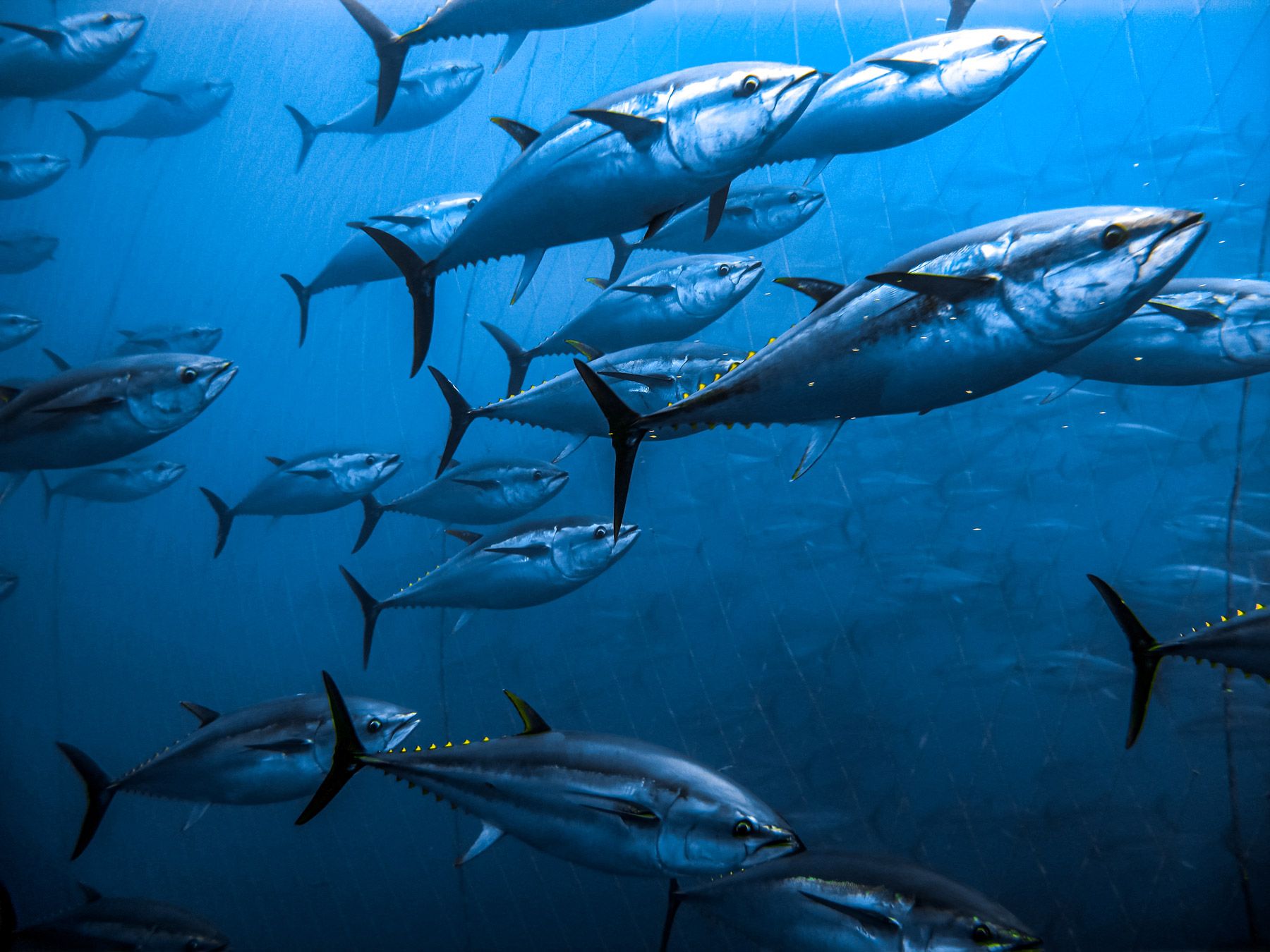
- The pectoral fins of bluefin tuna do not reach past the beginning of the second dorsal fin.
- The silver underside of a bluefin’s body is marked with white dots and uneven lines.
- The second dorsal fin is a mix of grey and yellow in color.
- The tail fin is dark blue in color.
Yellowfin tuna: How to recognize?
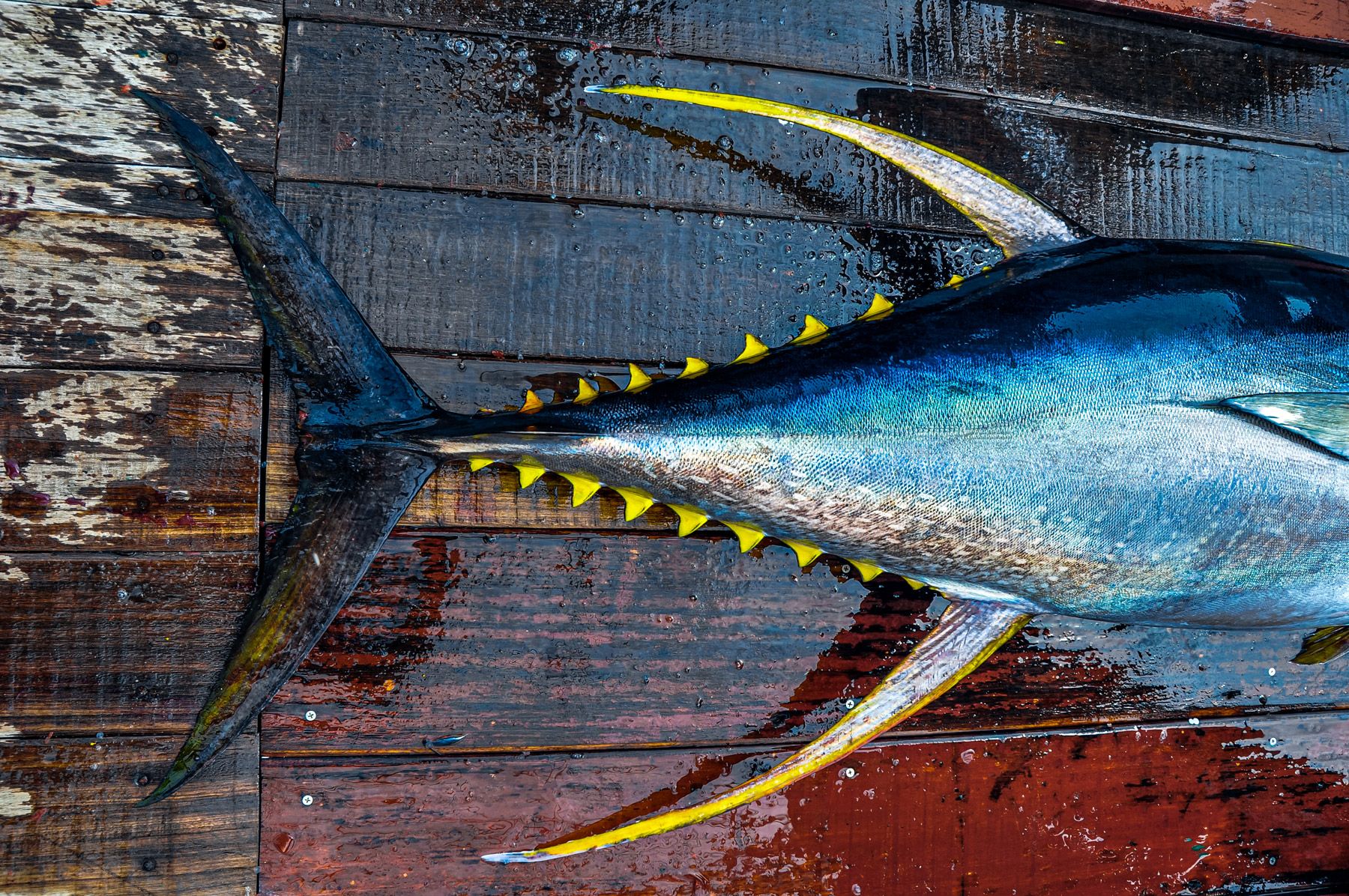
- The pectoral fin of a yellowfin reaches just beyond the beginning of the second dorsal fin.
- The second dorsal fin has yellow coloring.
- The tail fin has yellow and grey coloring.
Sharks
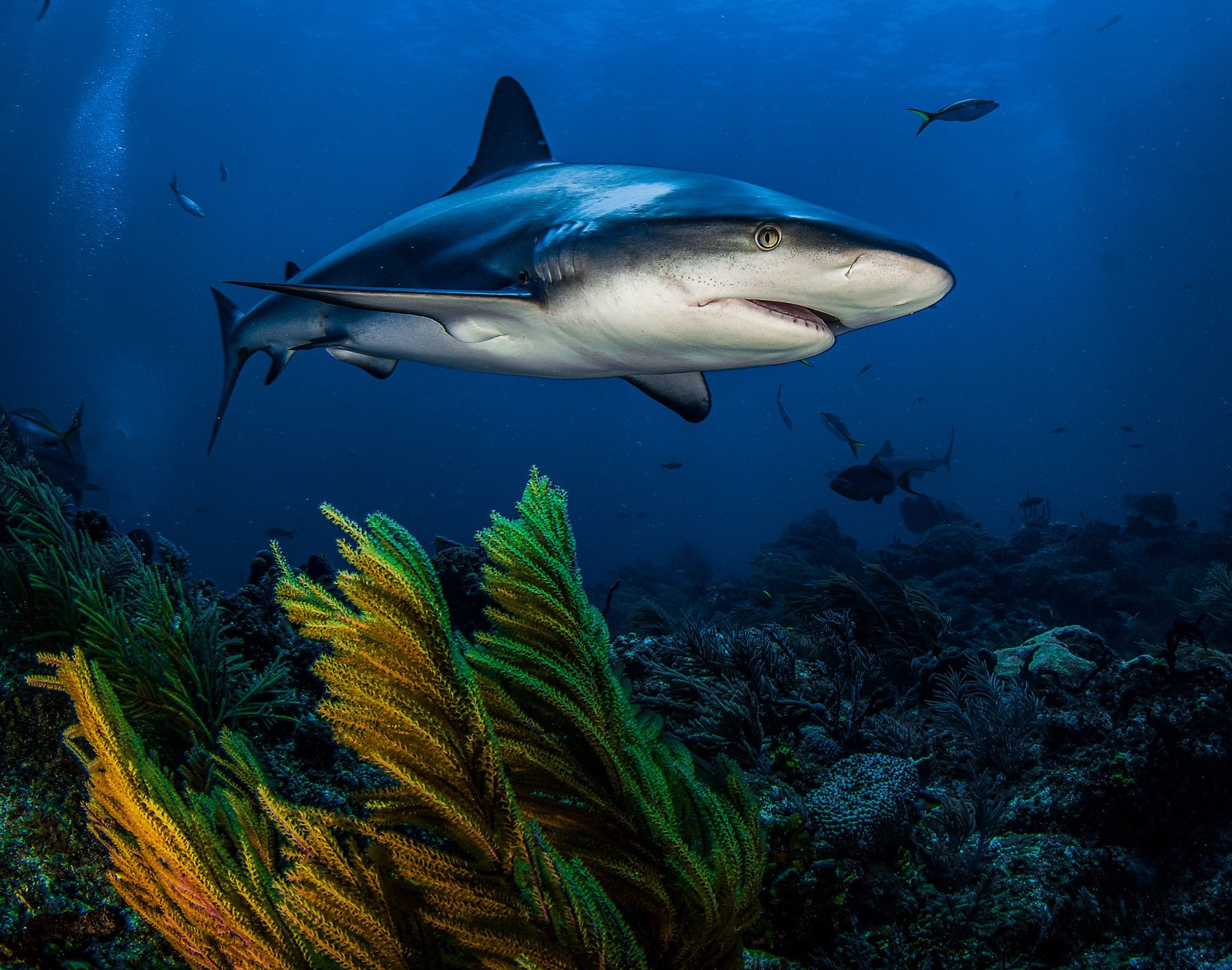
The Bahamas is one of the few countries which still has an many of sharks in its waters. Just 20 miles off the shores of the Nassau you will find Lemon, Hammerhead, Bull, Blacktip, Tiger and Reef sharks. Actively hunting for sharks is currently illegal in The Bahamas. If one is caught, it required to be released.
Spearfishing in Nassau
In contrast to hand line fishing, spearfishing is one of the introduced forms of recreational fishing. The Bahamas offers some of the best fishing in the world, so it’s no surprise that it is also host to world-class spearfishing. Whether you’re a first-timer or a seasoned spear-o there are plenty of opportunities to get some great fish including grouper, hogfish, snapper, lobster, or conch.
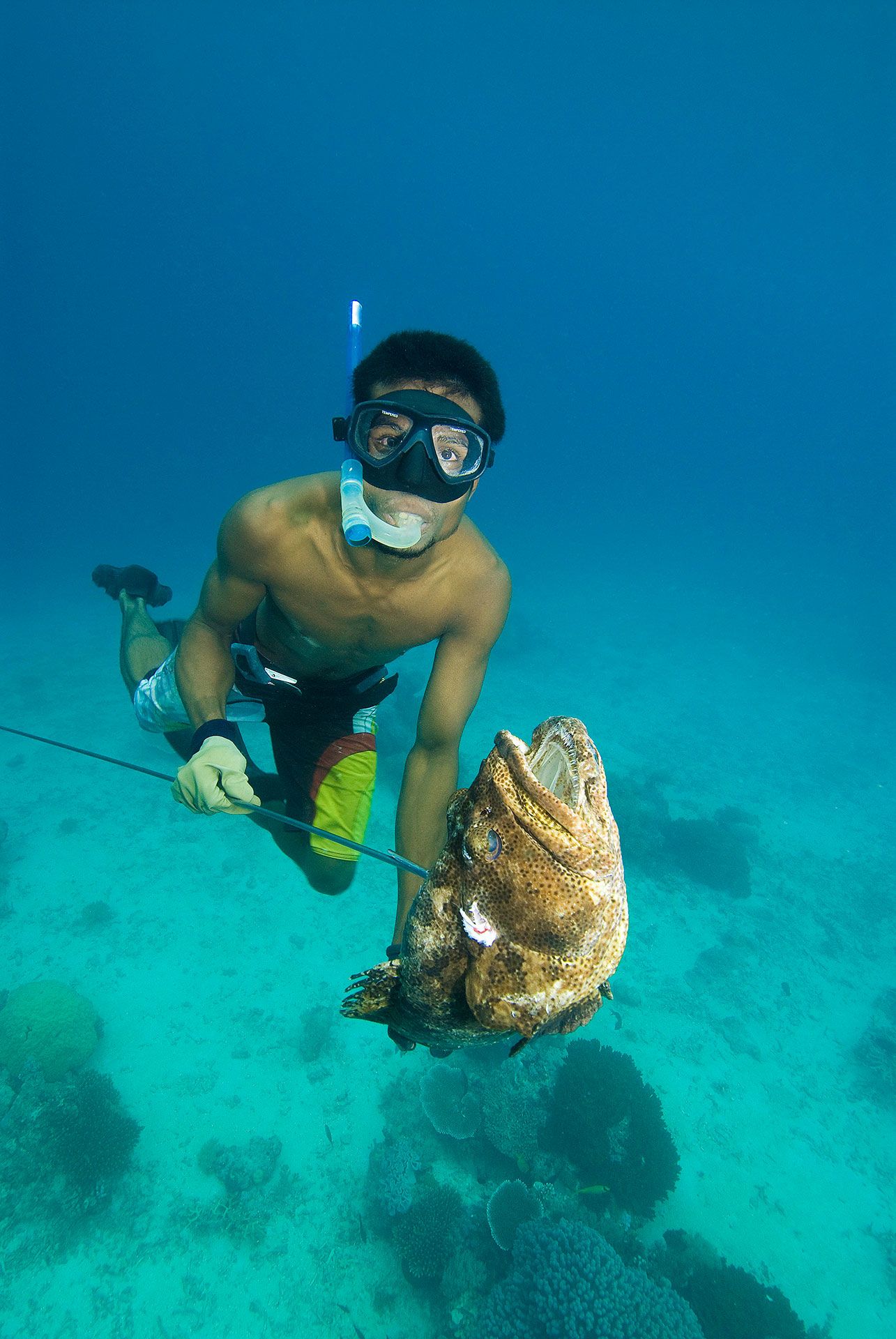
Picture: A local diver spearing himself a Nassau grouper.
You might be under the impression that the Bahamians are rather relaxed about the rules of spearfishing. This is not true, in fact the opposite. There is a reason why the Bahamian waters are one of the few seas still teeming with marine life.
Below are a few Bahamian spearfishing laws you will need to take into consideration:
-
Scuba gear is not allowed under Bahamian law to catch fish. The spear fisher needs to be both physically fit and an accomplished swimmer - AKA free diving (breath hold).
-
Spearfishing equipment consists of flippers, a mask, a snorkel and a "Hawaiian sling" which is the only legally allowed type of spear - spear guns are not permitted.
-
Spearfishing is not allowed within one mile of New Providence and/or the south coast of Grand Bahama Island.
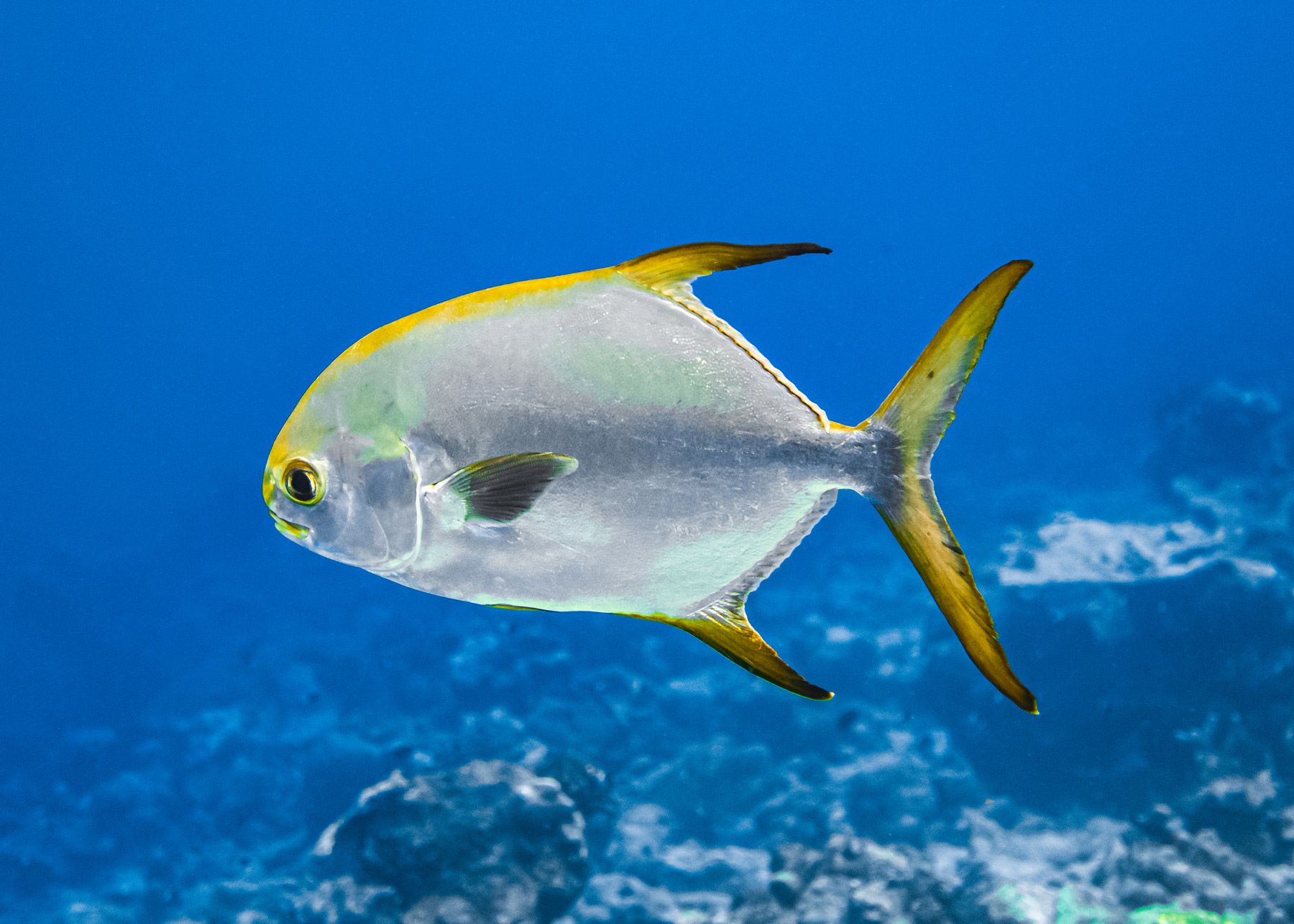
Picture: Permit fish.
-
Spearfishing is not allowed within 200 yards of the coast of any of the Bahamian Out Islands. This includes: Acklins & Crooked Island, Andros, The Abacos, Bimini, Eleuthera, The Exumas, Inagua, Long Island, Mayaguana, Ragged island, Rum cay, San Salvador or The Berry islands.
-
National Marine Parks are strictly off limits for any kind of fishing.
The most fruitful spearfishing is done on reefs or around heads of coral, where the fish tend to hide. For an accurate catch the spear fisherman has to know where he should be looking, which will often involve a series of dives as he gets down to look under ledges or into holes.
The rules of lobster spearfishing in The Bahamas
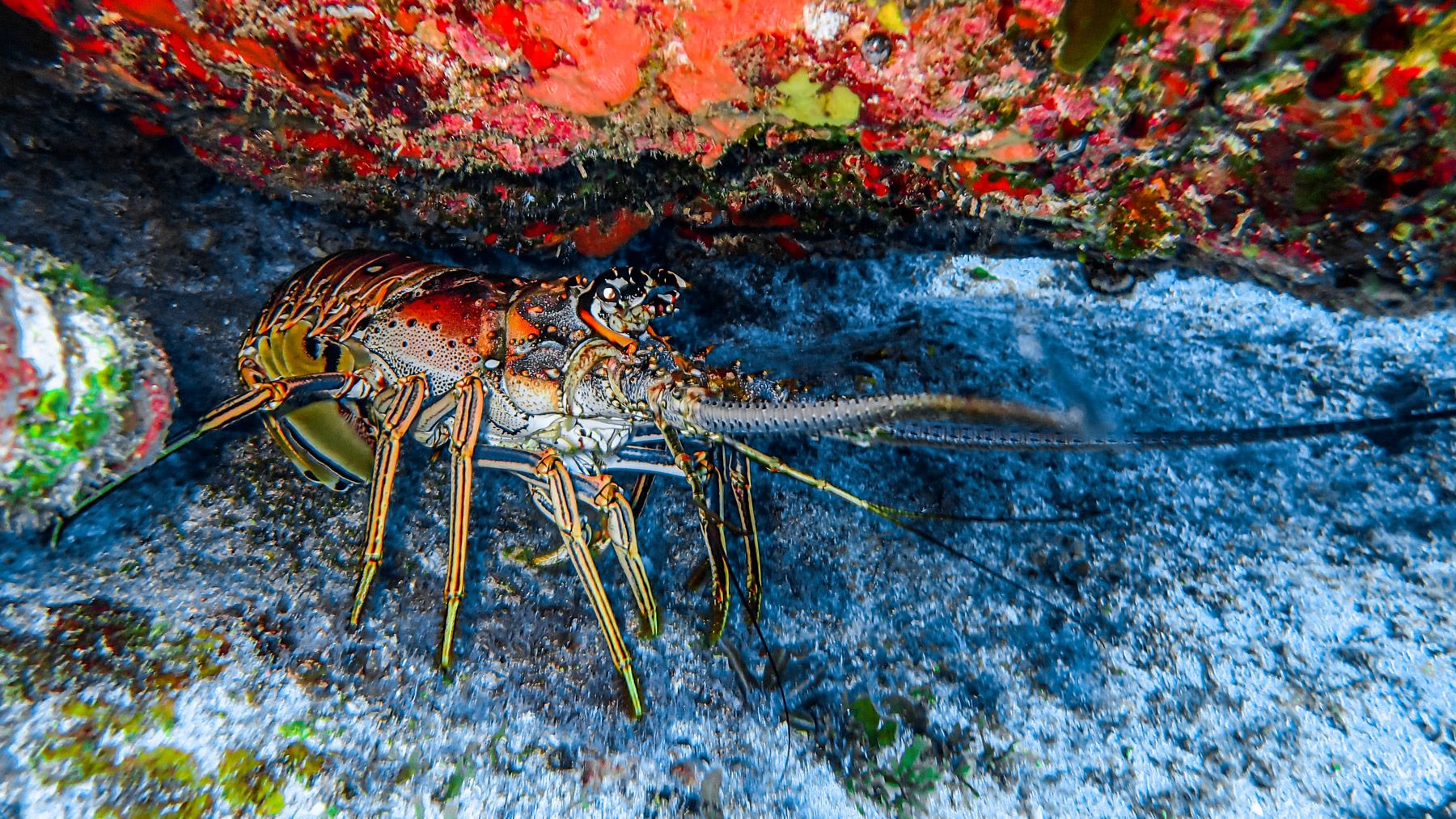
Picture: A Caribbean Spiny lobster, one of the top exports of the Bahamas.
Lobsters season opens August 1st and runs until March 31st. With hundreds of thousands of crustaceans being harvested each season, The Bahamian Ministry of Fishing has strict laws to ensure sustainability for generations to come. Here are the main ones:
-
Season: August 1 - March 31.
-
Bag limit: 6 per person. You may never have more than this limit on your boat, regardless of how many days you’re in The Bahamas.
-
Size: 3 3⁄8 inches carapace length or six inches tail length. Be careful—the US carapace minimum is 3 inches, so pay attention to how you measure your lobster.
-
You must possess a valid Bahamas cruising permit anytime you are on board your boat or in water when not on a dock, obtained at a designated port of entry.
-
Spearing lobster is legal in The Bahamas. You may only us a pole spear or Hawaiian sling.
-
Scuba gear cannot be used while taking lobster.
-
Egg-bearing lobsters are protected and are off-limits. The eggs are held beneath the tail, so keep your eyes open and be vigilant.
-
Any lobsters harvested in The Bahamas during their open season cannot be transported by private vessel into state waters during Florida’s closed season.
-
Lobsters brought back to Florida must be in whole condition and not tailed (see picture below).
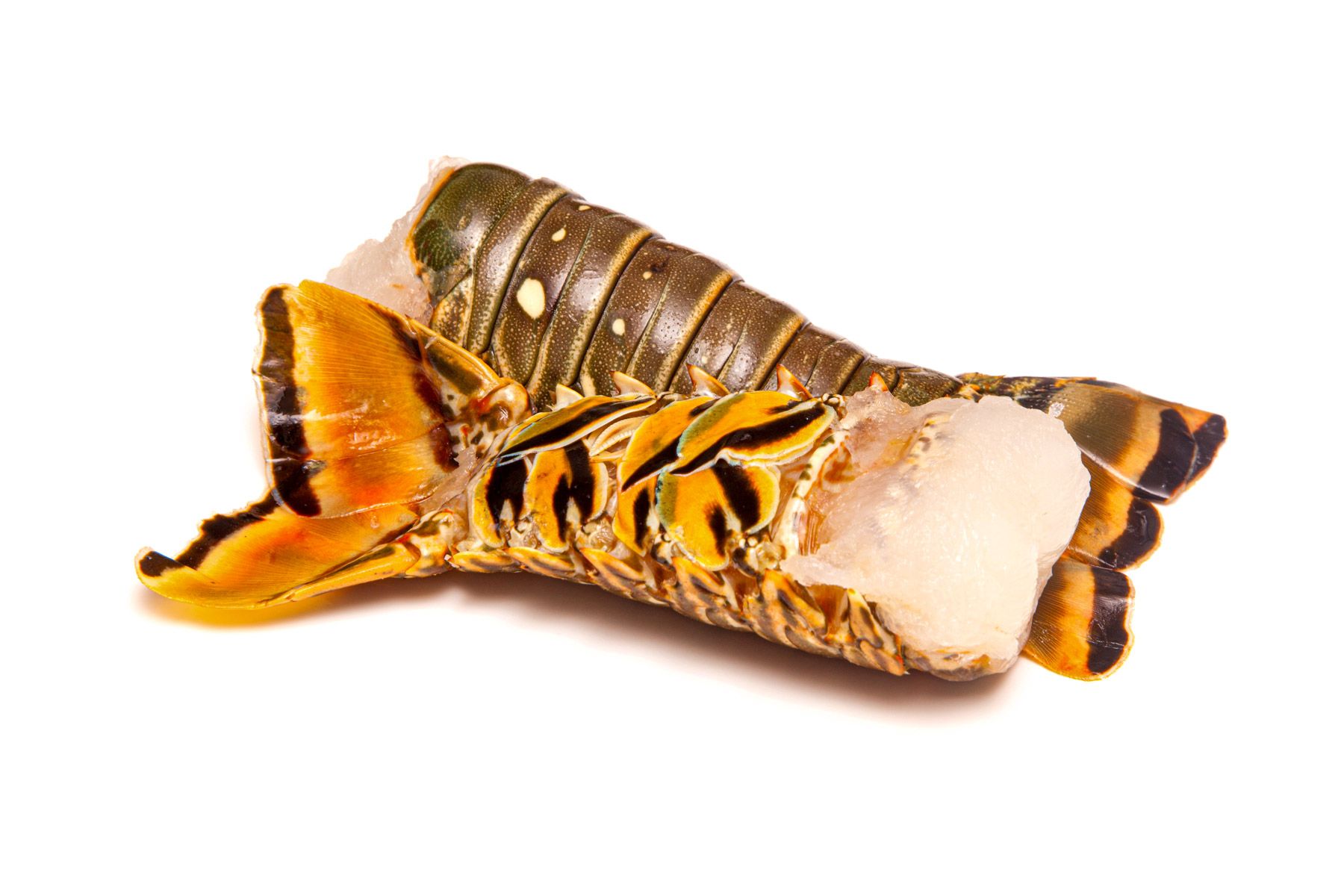
- When transporting by air to any US destination you should contact the US Fish and Wildlife Service for regulations regarding transport of lobsters, fish and conch.
Expert Tip: Be aware that these rules & regulations are subject to change at any time. Check for any changes with the Bahamas Department of Marine Resources at https://www.bahamas.gov.bs.
If luck is on your side and you nab yourself some jewels of the ocean, ask a local to prepare your fresh catch for you and see what “sea to table” dining is all about.
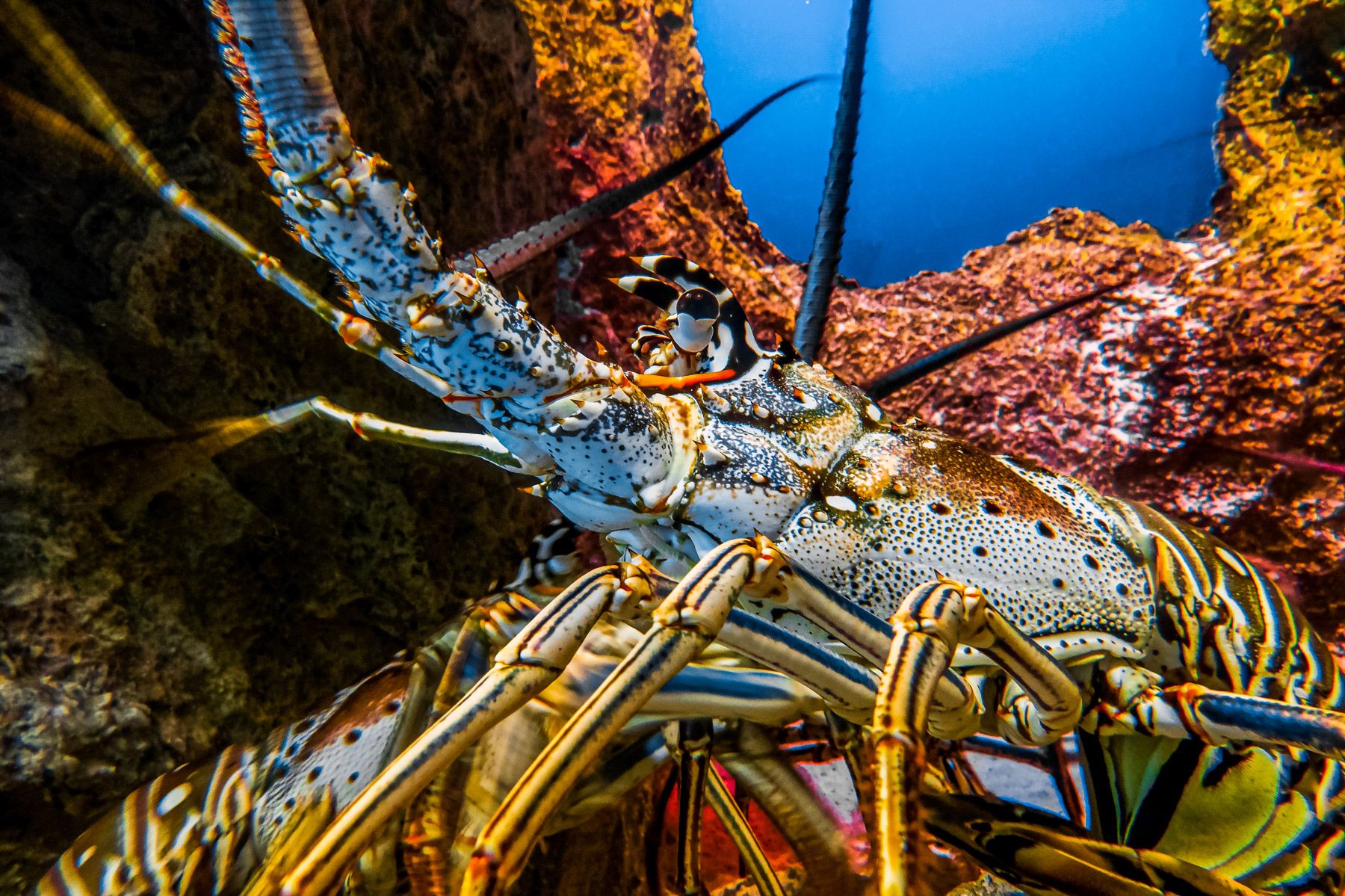
When is the best time to go fishing in Nassau?
Below is our easy to use guide detailing what fish are in season in the Bahamas during the year.
Inshore Fishing - The best times for top fish
Most noteworthy inshore fishing times:
- Amberjack - Fishing chances are superb March through August.
- Barracuda - Fishing chances are superb June through August.
- Grouper - Fishing chances are superb April through September.
- Kingfish - Fishing chances are favorable June through July.
- Permit - Fishing chances are superb April through July.
- Snapper - Fishing chances are superb April through September.
- Spanish Makeral - Fishing chances are superb March through April.
- Yellowtail - Fishing chances are superb April through September.
Offshore Fishing - The best times for top fish
Most noteworthy offshore fishing times:
- Bluefin Tuna - Fishing changes are favorable in April and June.
- Barracuda - Fishing chances are superb June through August.
- Blackfin tuna - Fishing chances are superb June through July.
- Blue marlin - Fishing chances are superb in June.
- Bonito - Fishing chances are favorable June through July.
- Mahi mahi (Dolphin fish) - Fishing chances are superb in April.
- Kingfish - Fishing chances are favorable June through July.
- Sailfish - Fishing chances are superb in April.
- Spanish mackerel - Fishing chances are superb March through April.
- Wahoo - Fishing chances are superb January through March.
- White marlin - Fishing chances are superb in May.
- Yellowfin tuna - Fishing chances are superb May through July.
Choosing the right charter for you
By far, one of the best water adventures is securing a boat rental for your first fishing experience in Nassau. In the Bahamas, you will arrive to find the most beautiful blue waters perfect for swimming and fishing. Finding the right charter means you’ll be able to focus on your angling skills in safety and in style while taking in the breathtaking surroundings. If you’re lucky, you’ll connect with a wonderful group of boaters who’ll soon become new friends.
1. Location, location, location.
Choose a charter that is near where you are staying. You’ll need to be bright eyed and bushy tailed for a day out at sea, so you don’t want to get up even earlier to travel halfway across the island to board your vessel. There are plenty of charter options on the island of Nassau. You shouldn’t have a problem finding a charter that suits your needs.
Picture: An example of the kinds of fish you don't normally want to catch. Queen triggerfish (or turbot), though beautiful, are not the cream of the crop when fishing in Nassau.
2. What type of fishing will you be doing?
As you now know there are a variety of fishing options. Do you want to do an inshore trip? An offshore trip? Or a reef trip? This will determine the type of fishing charter you should choose. Do your due diligence and ask the charter what fishing opportunities they offer. Also, be clear about what type of fishing you want to do. You don’t want to get stuck on a tuna charter, when all you wanted to do was fish bonefish. You may not only want to go fishing. A day out on a boat should be fun. Perhaps you’ll be out with your family or maybe with your buddies looking for a lazy day filled with water activities. Below are a few guidelines to help you make your decision:
- Do they specialize in big game fishing?
- Do they only do smaller time deep-sea fishing?
- Do they offer inshore/light tackle fighting (good for beginners and kids)?
- Do they offer snorkeling tours?
- Do they offer sightseeing tours/cruises?
- Do they offer beaching tours?
- Do they offer sunset cruises?
3. How big is your group?
The size of your group plays a pretty big role in your decision-making process of what charter to choose. If you’re heading out on your own you could join a shared a charter, or if you’re part of a larger group, you might want to consider a private charter. A standard size charter will cater for up to six people (known as six packs), while party charters can hold up to 60 people. Shared charters can be very affordable, but your chances of a catch may be limited. A private charter is your best bet.
4. Trip duration
You’ll have the choice between half day charters which will get you four hours, a full day which is eight hours and an overnight charter which means you’ll be spending the night on the boat. More time on the water means you’ll have more chance of making a catch.
5. Pick a fish
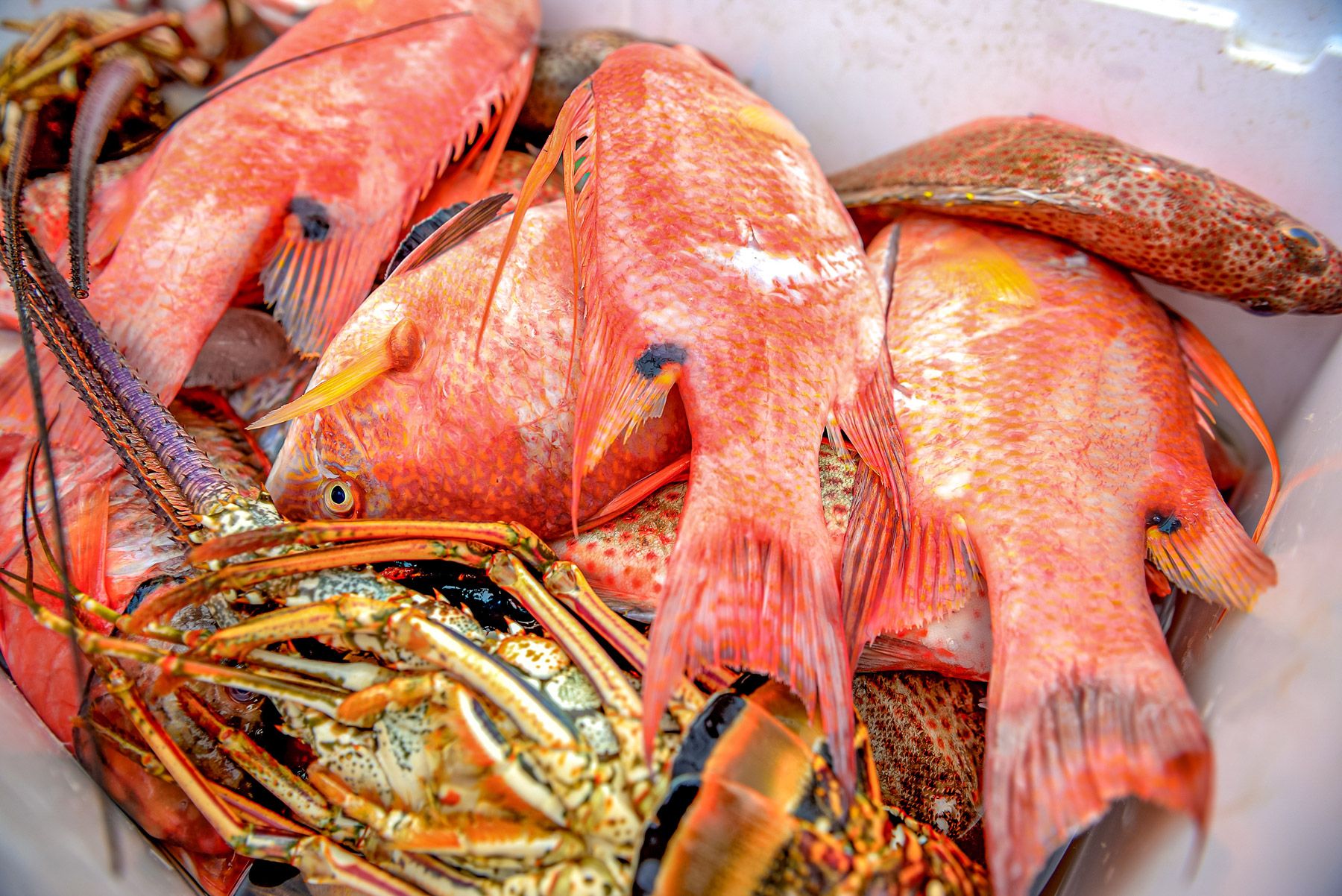
Telling the captain what type of fish you are hoping to catch, and the quantity can help the charter plan accordingly. Will you be looking to catch enough for a meal for two or are hoping to stock up for a rainy day? The captain will also be able to best advise if you’re fishing in Nassau out of season. There’s no use fishing for wahoo in July when the best time is around the earlier part of the year.
You might be a seasoned angler looking to catch a sport fish and have it mounted but are unfamiliar with the Bahamas. Ask the charter company if they can make recommendations, as most will be partnered with companies that provide these services.
Similarly, most companies will scale/fillet/clean/bag the fish for you so you can take it home, or if you intend on taking your days catch to a restaurant to cook it. Most companies will also be happy to make recommendations of where you can take it to be cooked for you.
6. O captain! My captain!
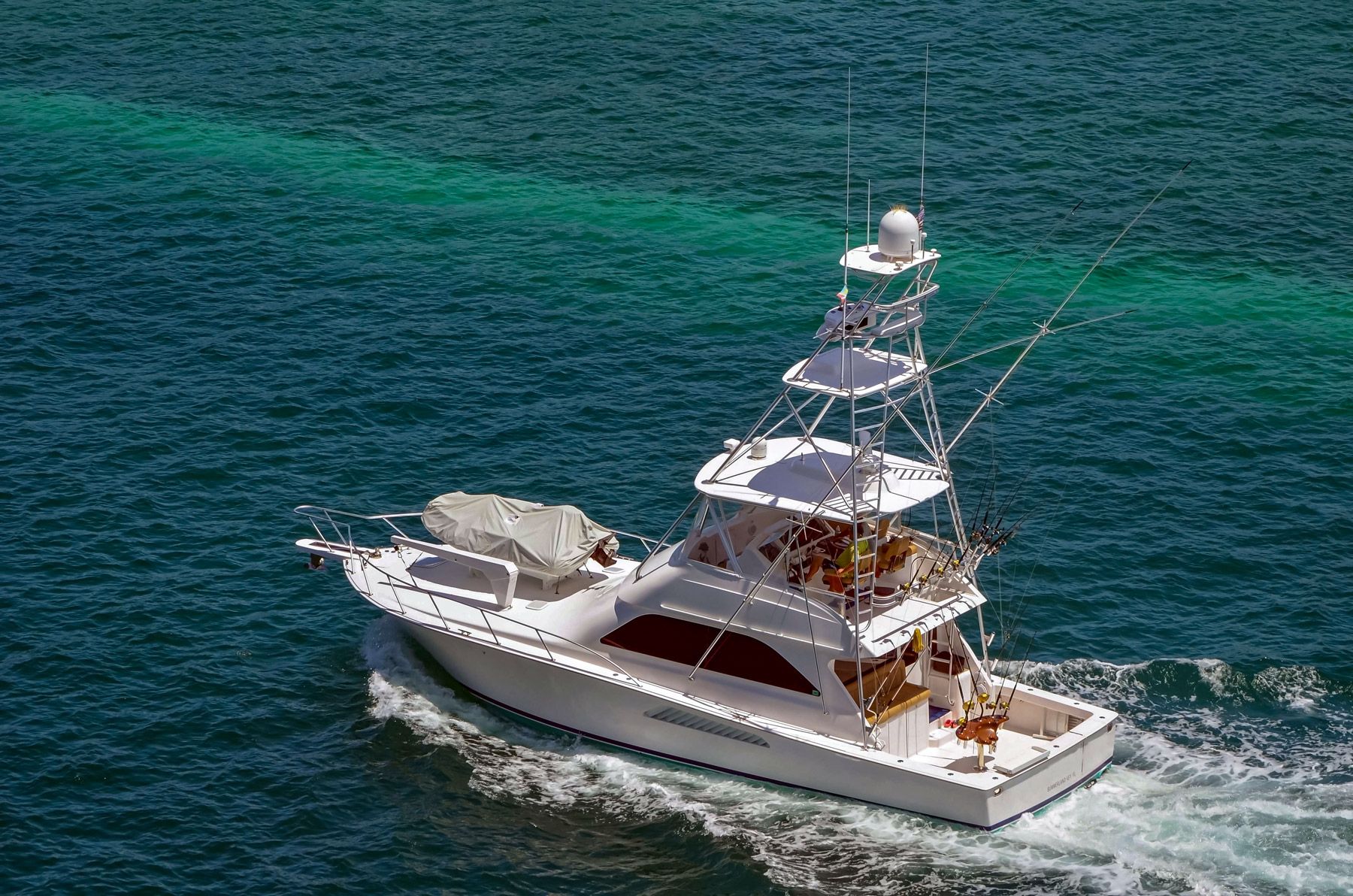
Always do your research! A day of fishing in Nassau promises to be one of the best experiences you are yet to experience out at sea. The last thing you want is to be living out your worst nightmare in the middle of the ocean. Read reviews on Yelp and TripAdvisor to get other people’s thoughts and opinions on how the captain operates, what the boat is like, what the crew is like, and whether it was a good experience. Below are a few considerations to help you gauge whether you have found the right captain.
- Make sure the charter captains are licensed boat captains.
- Make sure the charter captains do this for a living.
- Check how many years they have been in business.
7. Select your boat
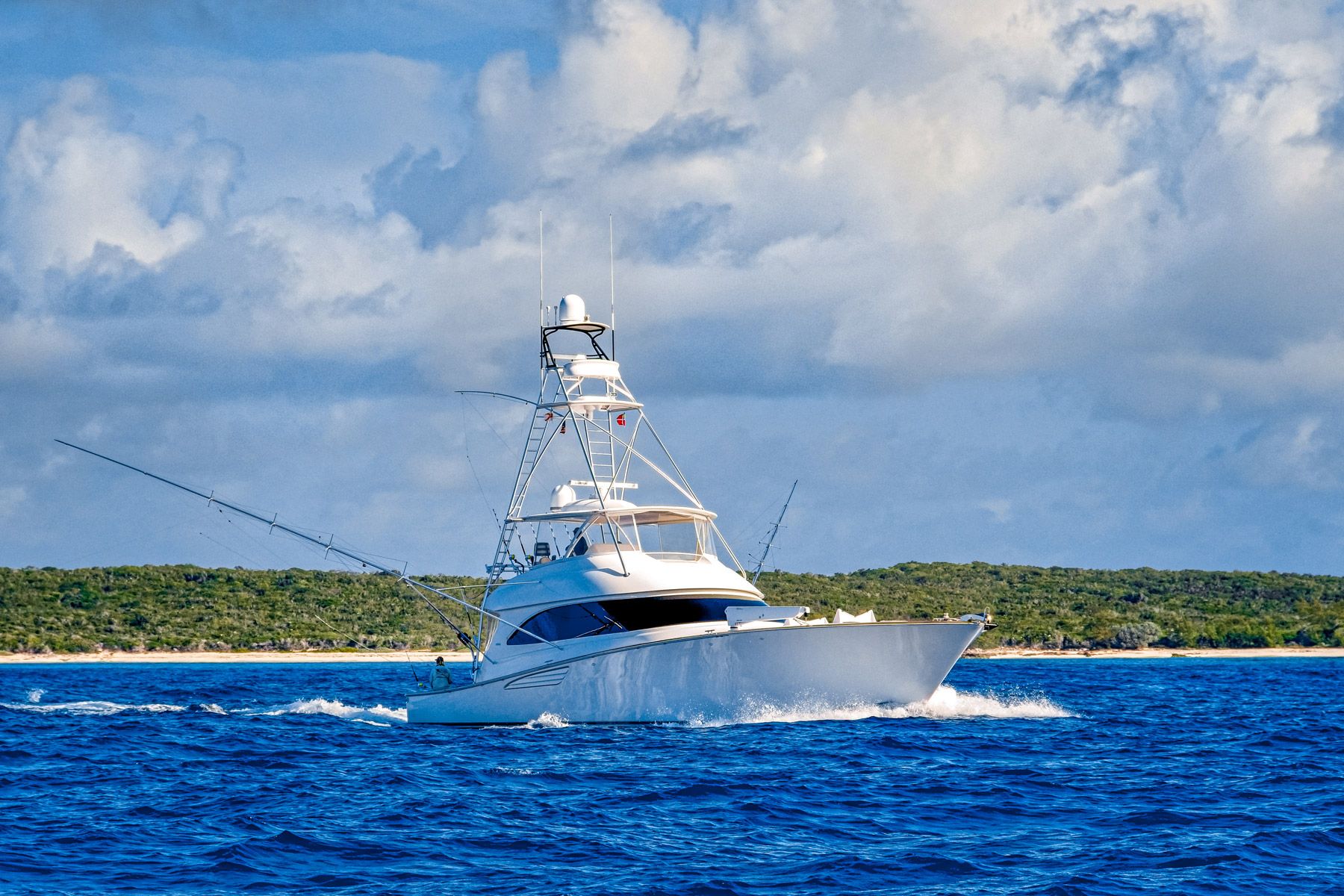
Be sure about the type of fishing you want to do in Nassau. This will help the captain select the right boat for the trip you’re planning. Some charter boats have restrictions as to how far they can be from shore. Your dream of deep-sea fishing may come to a screeching halt if all the charter only has canoes.
If you are travelling with your family, ask if their charters are family or kid friendly, if you are traveling with kids, as it could be a great opportunity for bonding.
8. Boat amenities
Amenities can so often be overlooked. Four to eight hours on a boat might not be so much fun if you find there isn’t a bathroom on the boat or a fridge to keep your refreshments chilled. Safety is also important. Make sure the boat has proper safety equipment. Double check the boat has a fighting chair. You may not think you need one but a long standoff with a 200 lbs. beast might have severe consequences on your back.
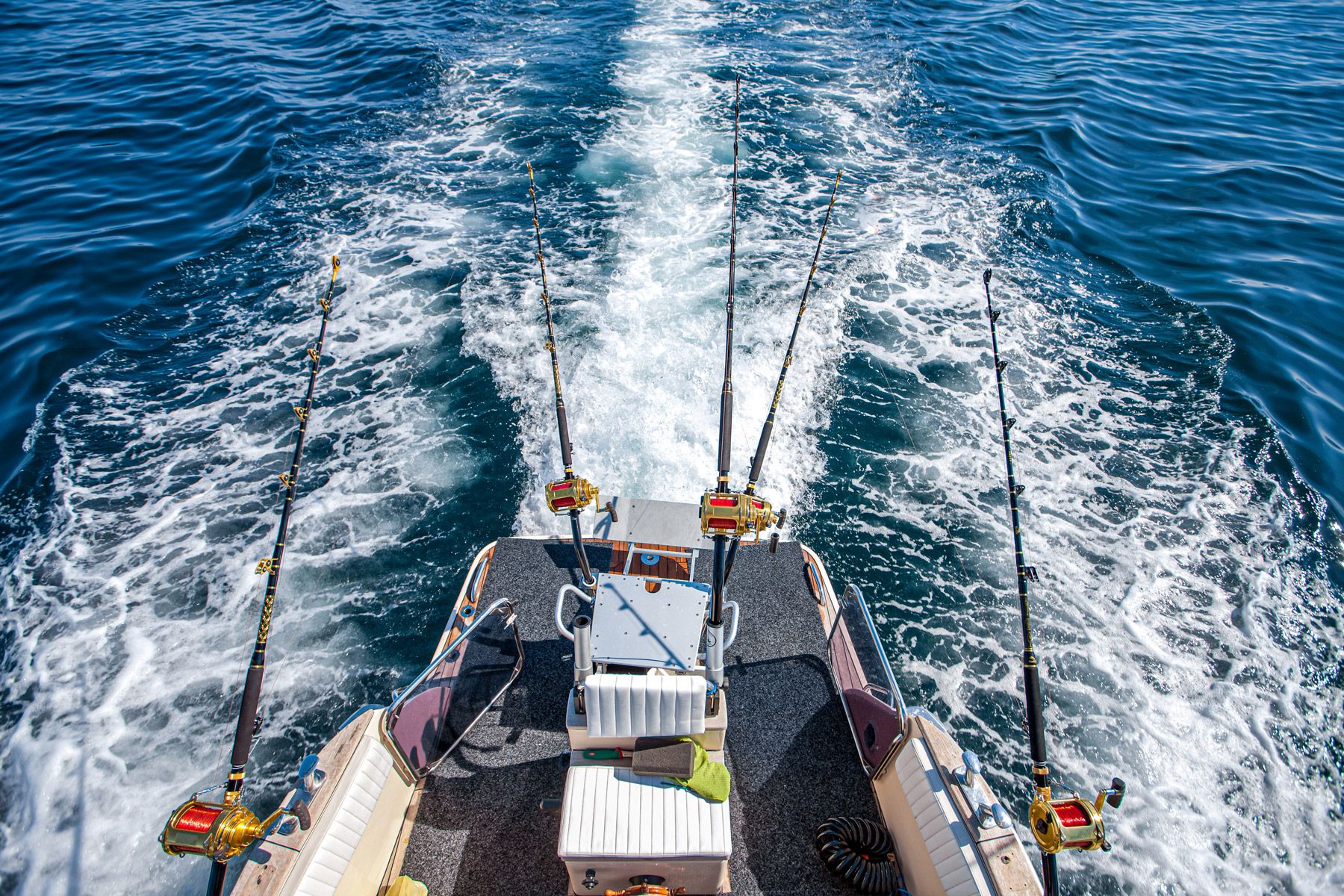
9. Conservation practices
Find a charter that is familiar with the fishing laws. These rules and regulations have been put in place for a reason and it is these reasons you are still able to enjoy beautiful days at sea creating memories to last you a lifetime. You want to be sure your captain knows what’s in season and what isn’t, quantity restrictions, whether you can keep a certain fish or not and what the boundaries of any protected waters may be.
10. Standardly cheaper charters are not always better
The right vessel for you when fishing in Nassau will ultimately come down to your budget. While it’s tempting to go with the lesser expensive option, you might just get what you paid for. If the deal seems too good to be true, do a bit of research and make sure you’re going with a tried and tested charter company and not just any Joe Blogs with a boat.
Before putting any money on the table here are a few questions you could ask to make sure you are getting your bang for your buck:
-
Ask if they give discounts for paying in cash, as some will give you an additional 5% or greater discount if you do.
-
Check to see if they will give you an additional discount if you book direct, as most will.
-
Always check their cancellation policies, as most will have a 72-hour policy where you will be obligated to pay some or all the booking fee, should you choose to cancel late, or do not show up.
-
Check what is included with your charter fee. Most companies will at minimum provide the bait, tackle/equipment, and ice – some will also include bottled water.
-
Check if the company has a no-fish-no-fee policy, where the company guarantees you will catch fish on your charter, else you are charged $0 for the trip.
11. Refreshments
You want to enjoy your day out on the boat with all the refreshments that your need at hand. If you’re on vacation, then you won’t want to worry about packing a picnic basket or a cooler box. When it comes to food, the charters will generally charge extra for anything they have on hand, should you choose to eat or drink it. If you are looking for a company that provides packed/boxed lunches, some charters will do it at a nominal fee. If you require any special drinks or liquor, most companies will be happy to source them for you at an additional fee.
Expert Tip: If you are unsure of which charter is best, why not try Sandals preferred charter company, Island Routes. Get the best fishing experience without any hassles.
What should I bring on a fishing boat?
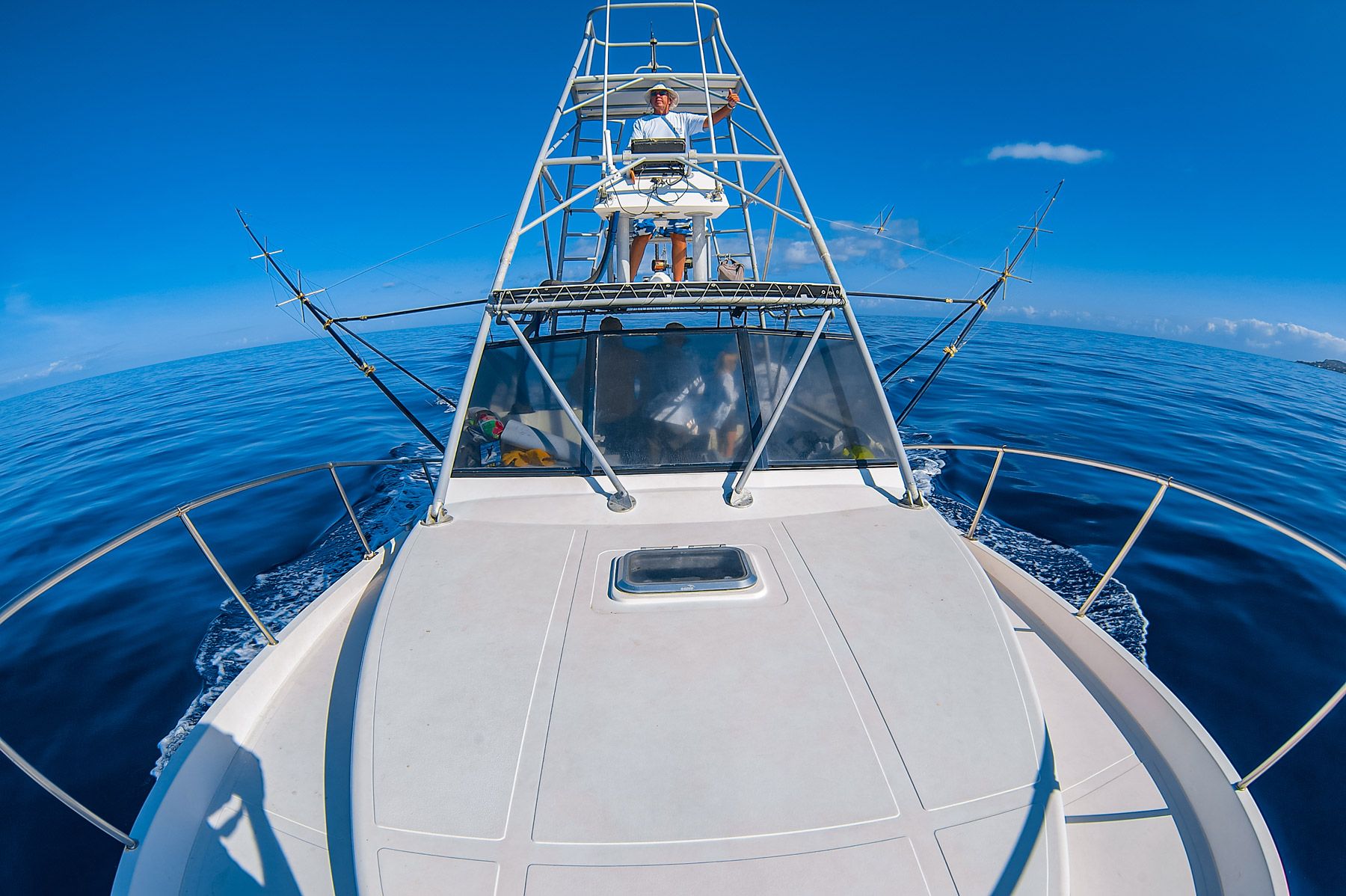
Unlike a day out on the beach, there are a few essentials you should consider bringing on the boat with you before heading out to sea, especially if it’s a full day excursion. Fortunately, most charter companies in Nassau will provide you with most of the fishing gear you need, but it’s always best to check when booking your excursion. Below are a few tips when planning for your fishing trip:
- Sunscreen.
- Sunglasses.
- Hat.
- Bottled water and snacks.
- Camera to capture your “Ernest Hemingway” moment.
- Anti-nausea medication (if needed).
- Light sweater or jacket.
- Towel.
- Flat, non-slip shoes. Preferably not flip-flops or sandals.
Expert Tip: Your safety is very important. Please ask your crew for full safety directions for the charter.
Bahamas sport fishing events calendar 2019
Angling enthusiasts descend on the Bahamas throughout the year to pit themselves against some of the biggest predators of the sea. With such variety, it is very easy to understand the lure to world-class competitors.
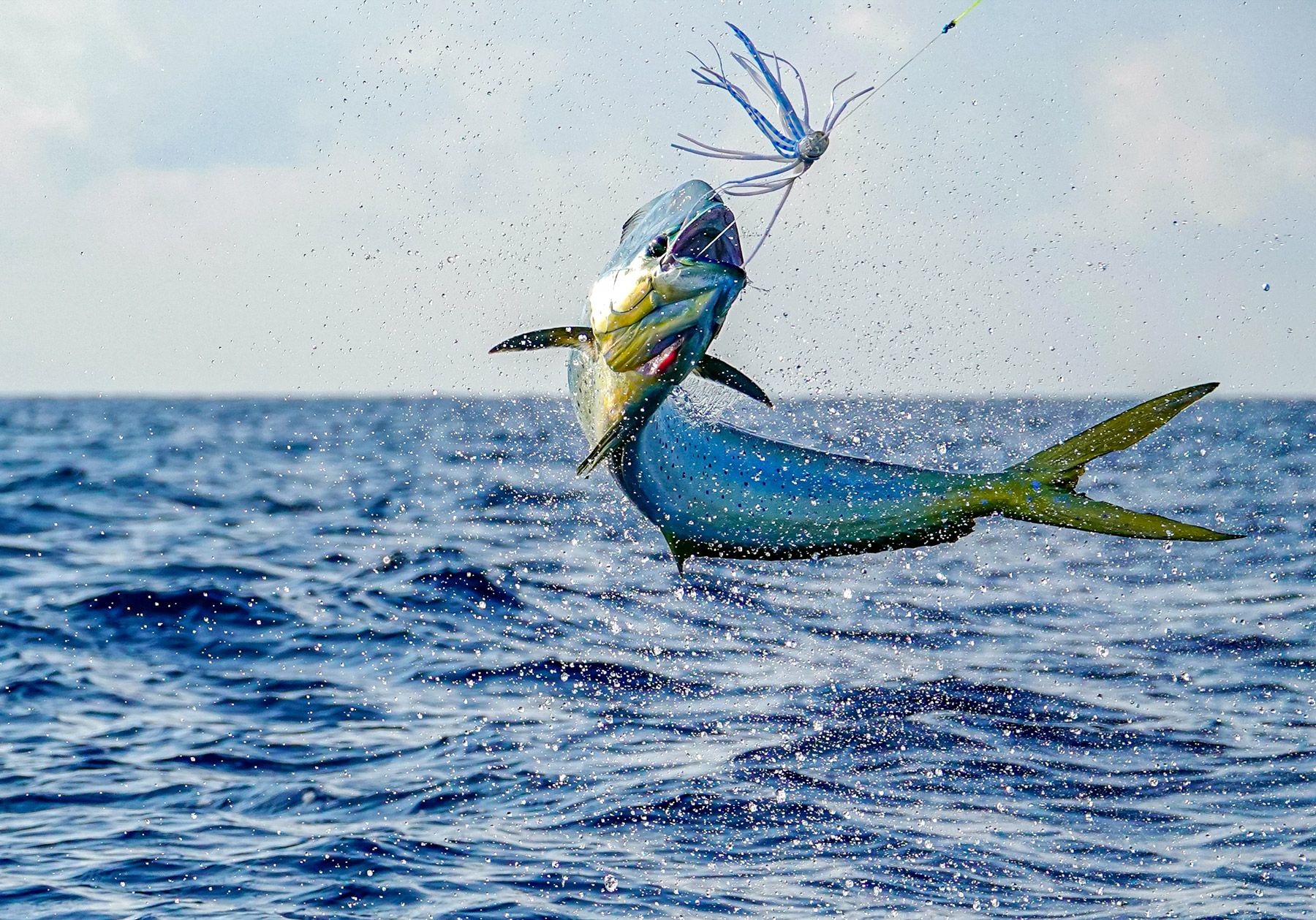
Fishing events in February
- 14th Annual Wahoo Championship
Start: 3 February 8:00 am
End: 6 February 5:00 pm
Location: Hawk’s Nest Resort & Marina, Cat Island.
The wahoo is an outstanding gamefish, reputedly the fastest game fish in the ocean. It requires a lot of skill and knowledge to boat this fish successfully. The Bahamas is known worldwide as a prime location for the pursuit of wahoo.
Fishing events in April
- Bahamas Billfish Championship Series
This is held annually during the spring and early summer at five different locations. Anglers are welcome to take part in all or as many legs as they wish. The first two legs are held in April and Bimini and Walker’s Cay. In May, the tournament moves to Treasure Cay and Boat Harbor. It ends at Chub Cay in June.
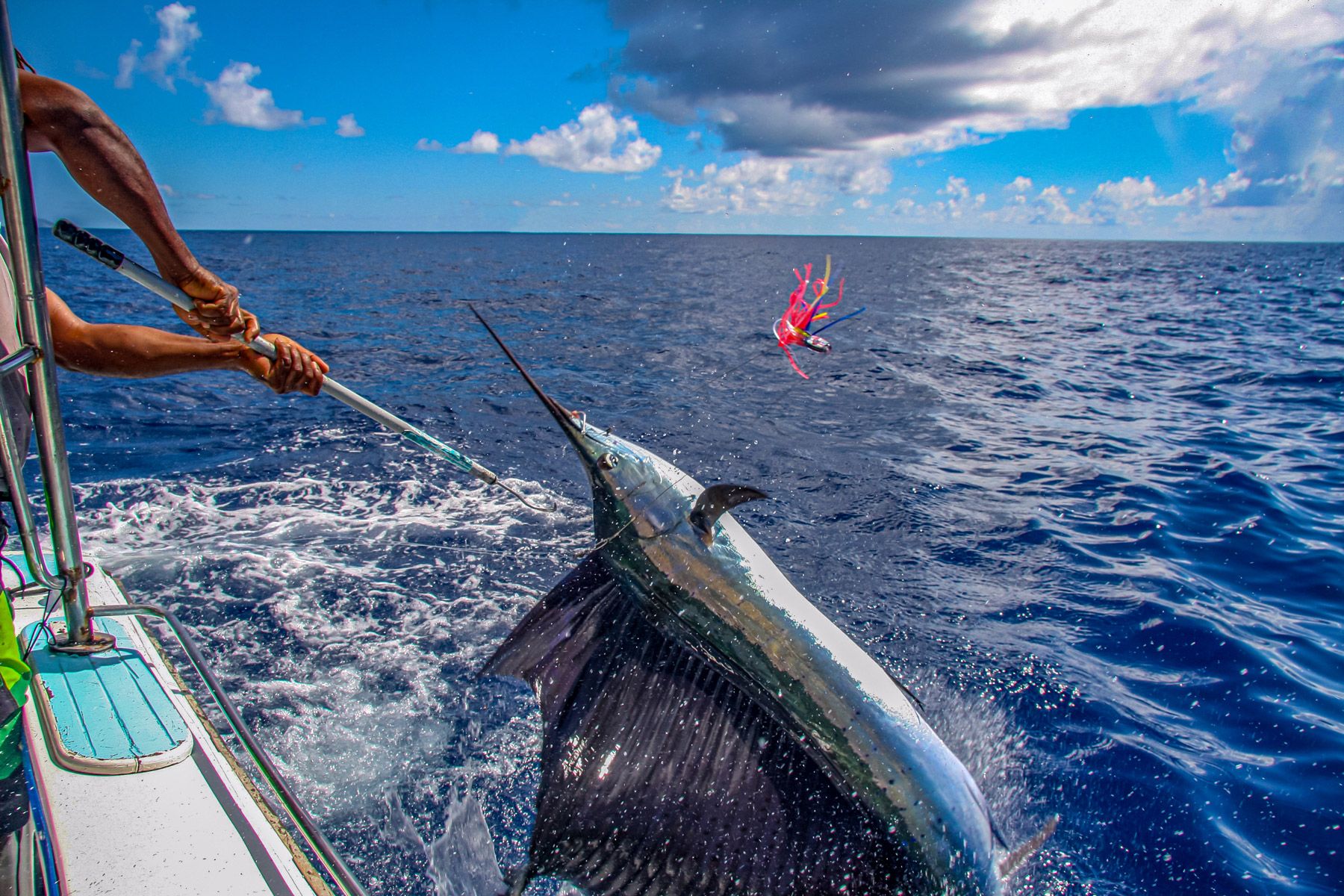
- Abaco Anglers Fishing Tournament
Annually throughout April
Location: Elbow Cay, Abaco.
This Deep Sea and Bottom fishing tournament has been part of the landscape for more than thirty years. It is family oriented, catering to local fishing enthusiasts and visitors wishing to visit the Abacos and participate. All levels of fishing abilities, including children are encouraged.
- Skip’s Tournaments Custom Shootout
Start: 30 April 30
End: 4 May
This charity event is limited to just 60 custom inboard teams - 32’ or larger - chosen by invitation only to represent the custom boat manufactures in an all-release format. Charities include; Breast Cancer Research Foundation, IGFA, Joe DiMaggio’s Children’s Hospital and many other organizations in need.
Fishing events in May
- Skip’s Tournaments Custom Shootout
Start: 15 May
End: 18 May
Location: Abaco Beach Resort & Boat Harbor Marina.
Just 50 teams represent the U.S. custom boat manufacturers in this all charity event. Accept a coveted Custom Shootout invitation. You will compete among the most elite fleet of sport boats assembled in one location. Leg Two, Abaco Diamond Series.
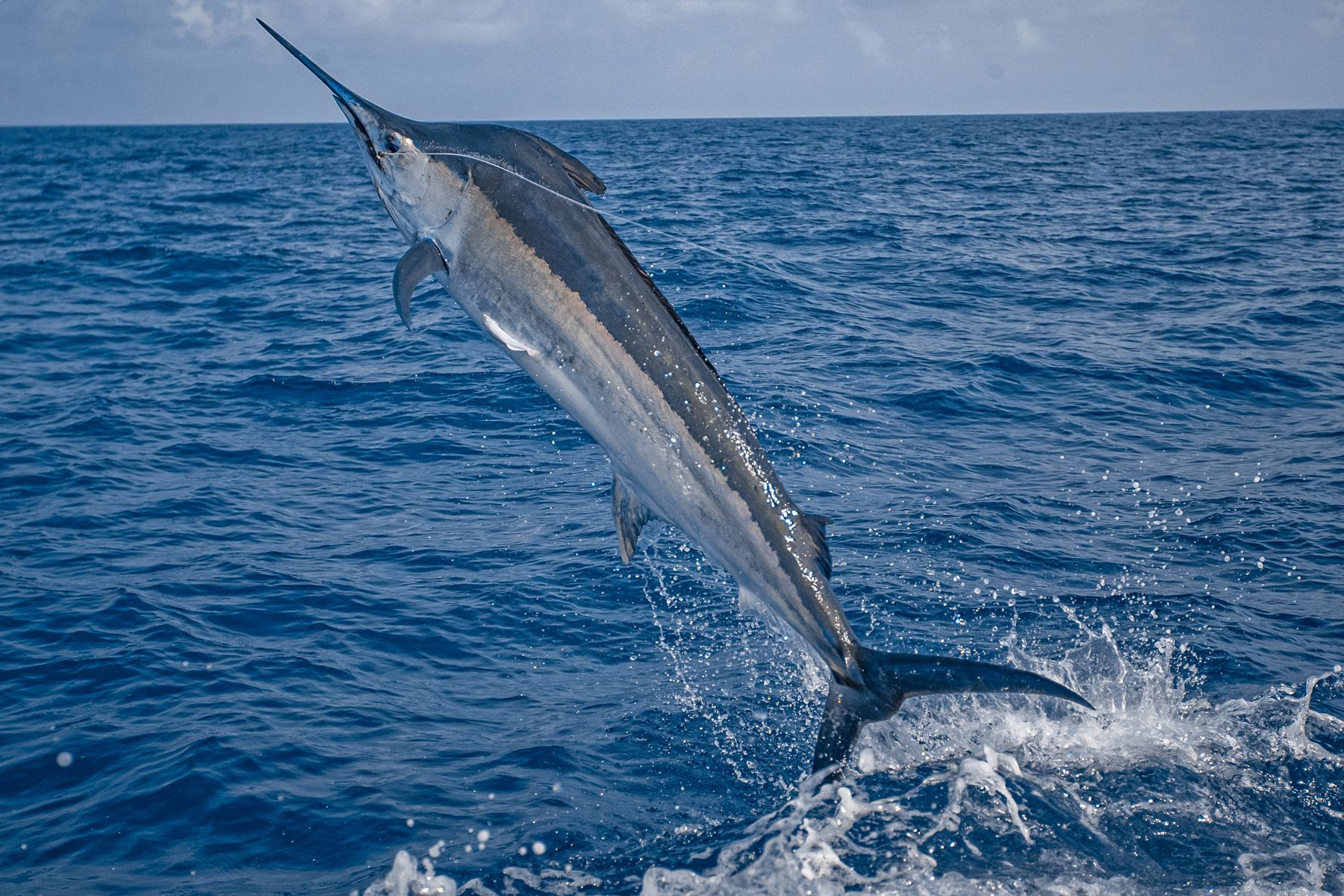
- Abaco Beach Blue Marlin Tournament
Start: 29 May
End: 1 June
Location: Abaco Beach Resort & Boat Harbor Marina.
Final leg of the Abaco Diamond Series.
- Sea Spray Resort Fishing Tournament, Elbow Cay, The Abacos
Annually throughout the year.
Deep Sea Fishing has a home in White Sound, Elbow Cay. This event caters to fishing enthusiasts wishing to visit the Abacos and enjoy the hunt of the blue marlin and Tuna. It is also a promotional event for the resort and the Abacos.
Fishing events in June
- The Bahamas Rotary Tuna Classic Annual Tournament
Annually throughout June
The Bahamas Rotary Tuna Classic, Annual Tournament features prizes and a grand trophy for the largest tuna.
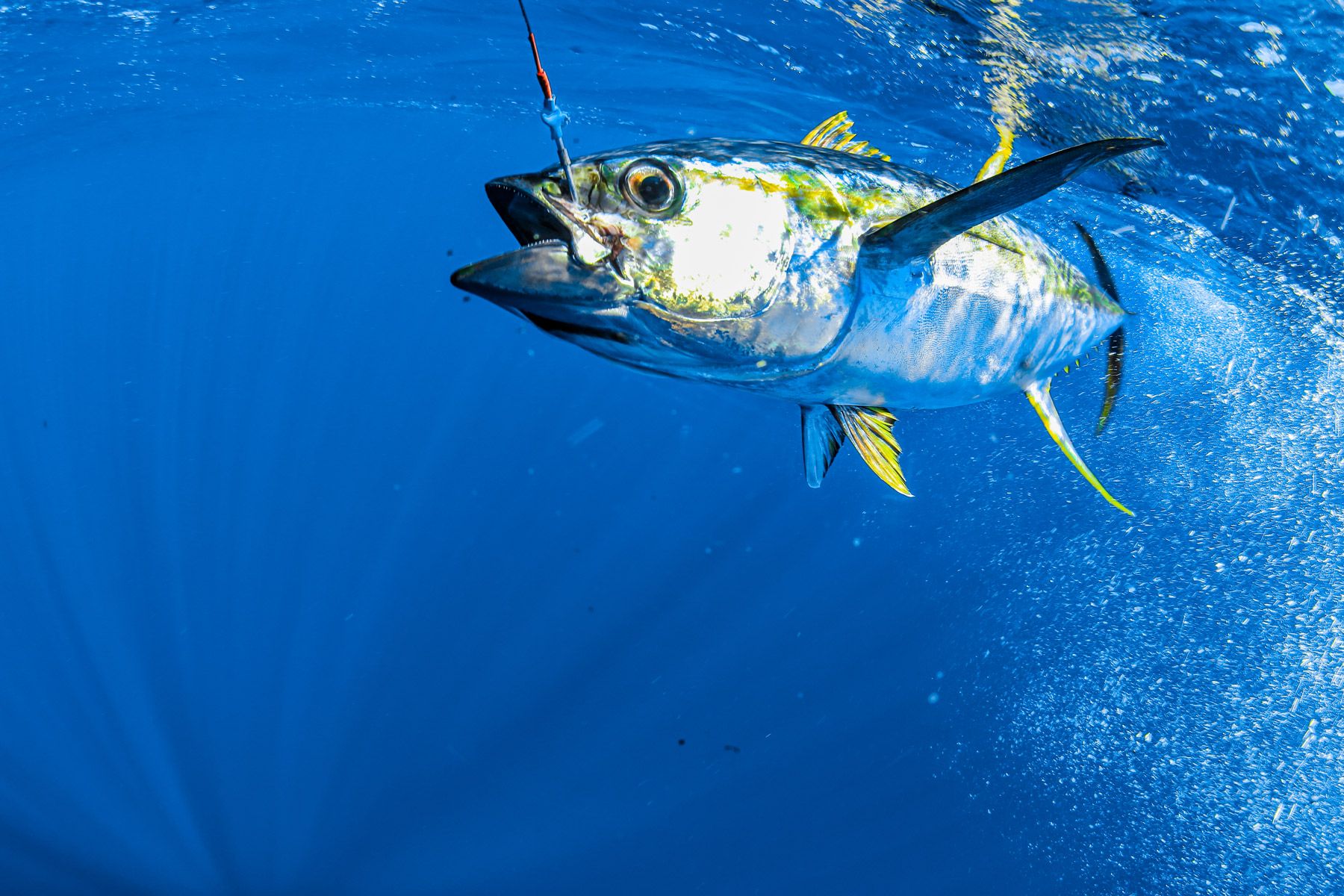
Fishing events in August
- Bimini Native Fishing Tournament
Start: 5 August
End: 10 August
One of the oldest fishing tournaments in existence, this is a major visitor attraction during the month of August. The day is widely celebrated through the Bahamas as August Monday. Each sign-up is offered a package of six cocktail parties, a beach party, dinner Junkanoo parade as well as an exciting Awards Presentation.
Fishing events in November
-
The Wahoo Smackdown
-
Bimini Big Game Club Tournaments
-
2019 Old Bahama Bay Wahoo Charity Cup
November
Location: Old Bahama Bay Resort & Marina
West End, Grand Bahama
This tournament is not-for-profit. All proceeds going to Leukemia & Lymphoma NI. 100% of all cash donations, 20% of boat entry fees, and all proceeds from the raffle and silent auction go straight to charity.
- Bimini Wahoo Mayhem Tournament
November
Location: Bimini
Now you know, it's time to go fishing in Nassau!
If you are looking for the adventure of a lifetime, fishing in Nassau might very well be it. Welcoming first-timers and seasoned anglers, the Bahamas makes for the perfect setting for a day out at sea with family and friends. With this definitive guide, you have all the information you need to get out there and catch your first wahoo, mahi mahi, tuna, or even join a tournament to catch your own trophy marlin! You never know, you might be shouting “STRIKE”, sooner than you think.
